May 15, 2022
Martha O'Kennon
That Springlike weather we were promised last week became a bit more like Summer! 80's F all day on Thursday. It sent me packing to the basement to swap the ducts from Winter to Summer configuration. I also decided to make sure the new AC works, and it does. But then I switched it off for now and used the window fans to cool down the house for sleeping.
The Dandelions appeared suddenly and standing tall, like a real hot-house plant. But that's about right for here and now. The Wild Geraniums, which had this ONE bloom a few days ago, are doing just fine now, as you'll see. And the Mauve Primrose in the back garden is getting mauver and mauver. I love that color, did you know? By the way, you all know about the two kinds of plants called "Geranium", don't you?

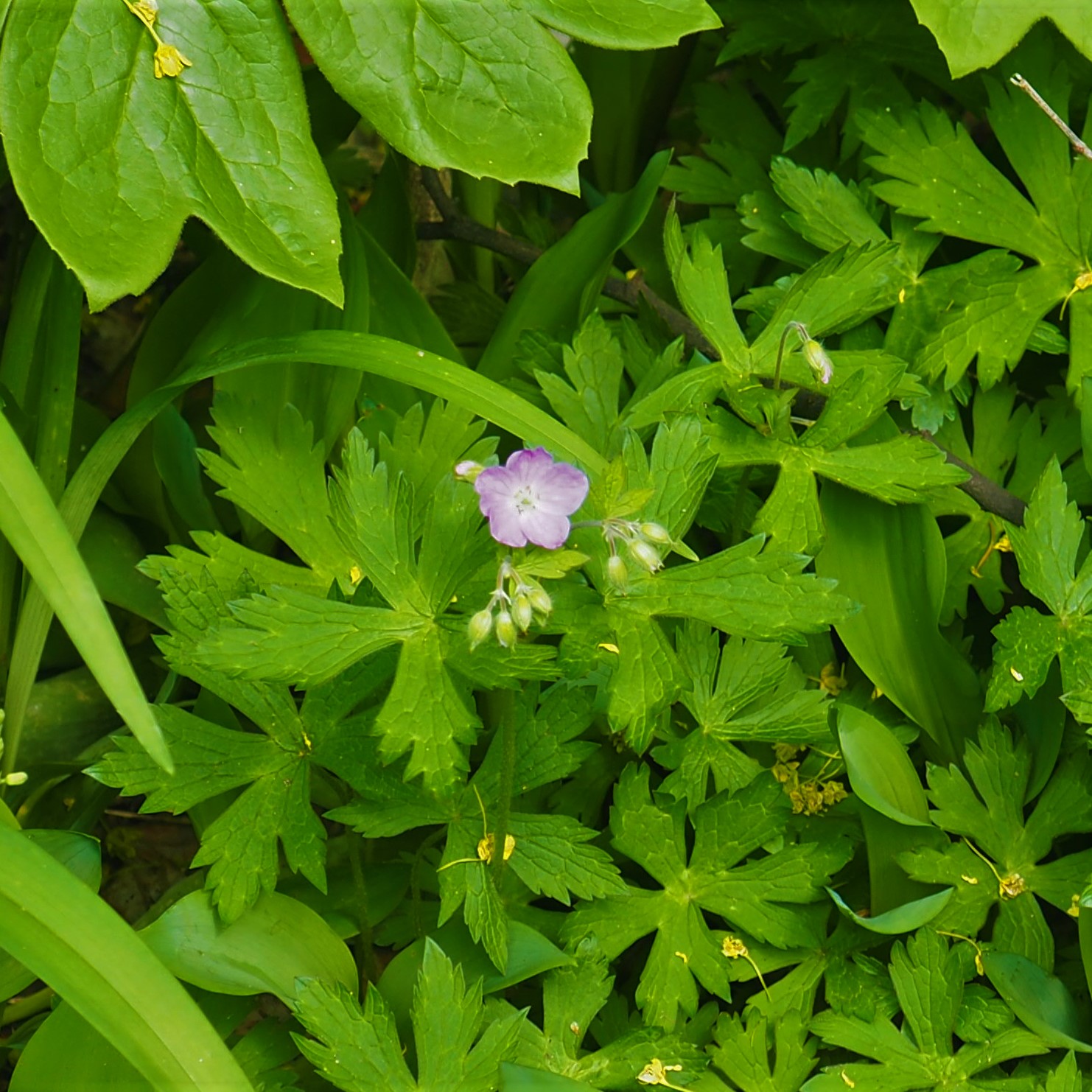

The Ants never fail to surprise me. So far we had mostly seen the Winter (Small Honey) Ant, the Nearctic (Smaller) Carpenter Ant, and the Eastern Black Carpenter Ant. The Nearctic Ants are the ones that swarmed on April 29. But they were back (pictures 1 and 2) swarming again on May 6th. I thought there must be some giant Mate Wave that passes across the populations in a certain area, but maybe it is more higgledy-piggledly than that. I'll be telling you about Toad Time next. Third here is a usual Worker Nearctic Carpenter Ant. (They have the bright red thorax or not.)
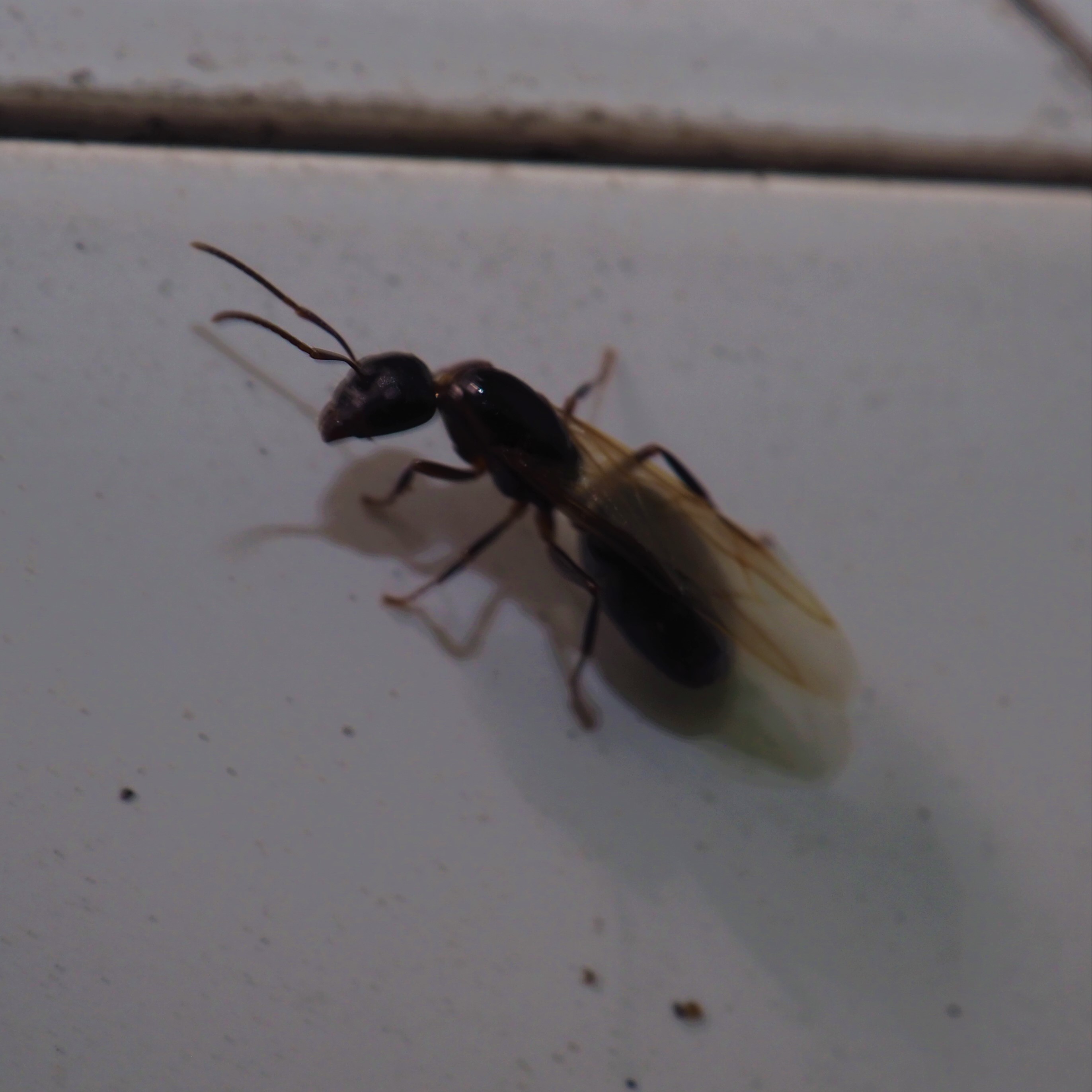
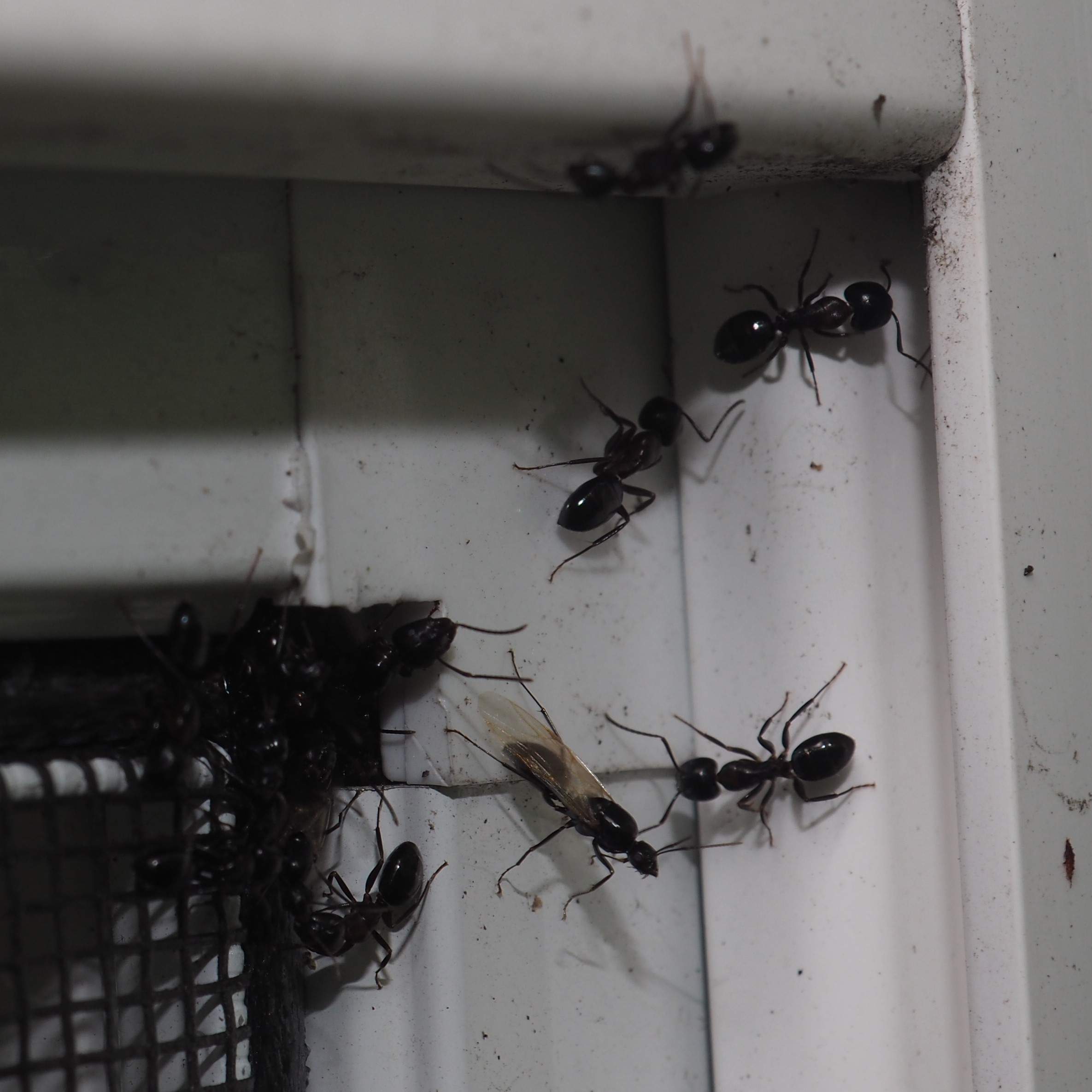
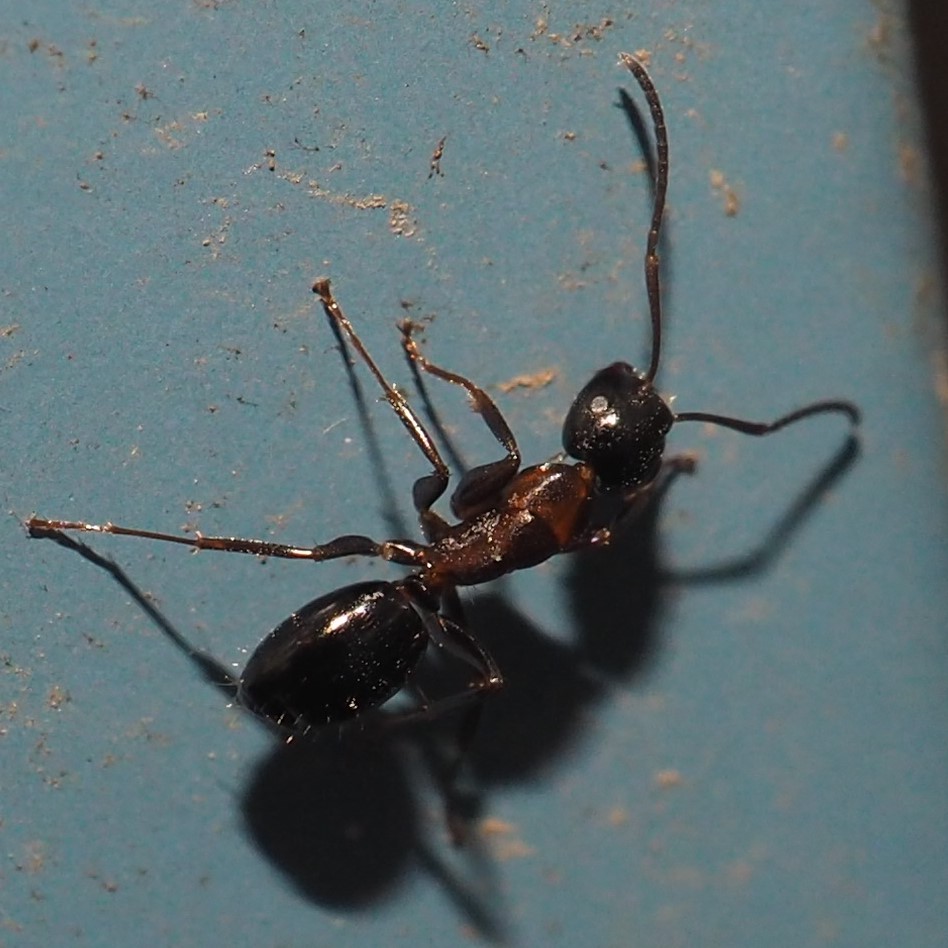
Let's look at some of the Beetles. Aha! After waiting a year to see if the appearances of this little Beetle Phyllotreta ochripes (picture 1) and the lovely pest plant Garlic Mustard (picture 2) are somehow linked. Picture 2 is the photo I took of the Garlic Mustard on May 4, when its leaves were already showing damage from innumerable tiny bites that resemble the damage I saw last year on the last surviving plant.

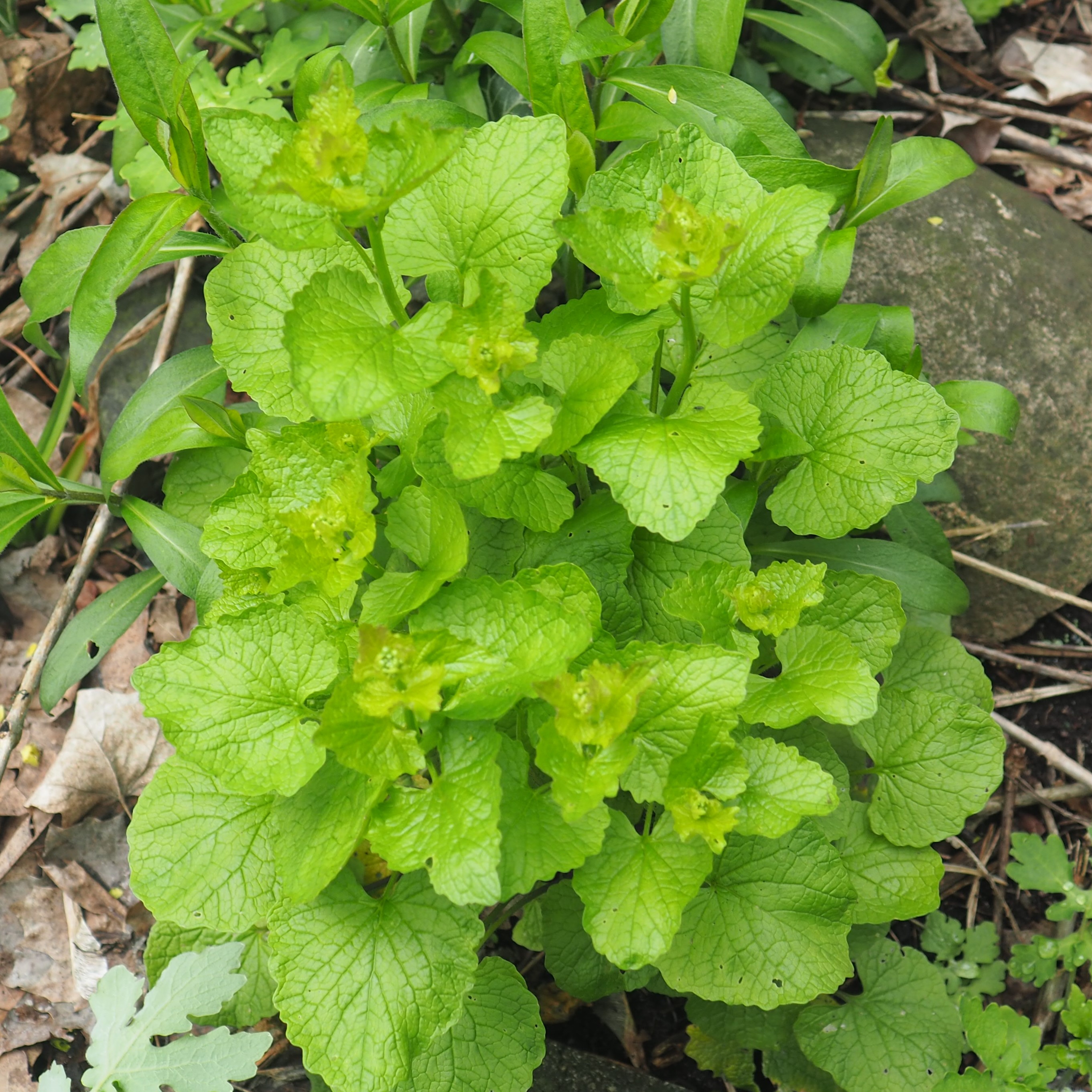
I'm still asking for an ID for the Rove Beetle in picture 1. Well, ask no more! Our Coleopterist, MJ Hatfield, a frequent flier on Bugguide.net, suggested our Beetle might belong to the subfamily Carpophilinae. She sent me here ..
Thanks MJ! But the second picture is of the Weevil, Redbud bruchid.
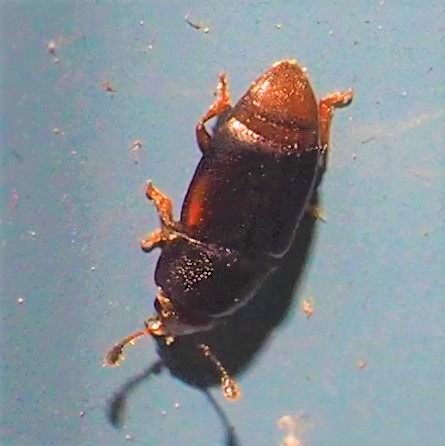
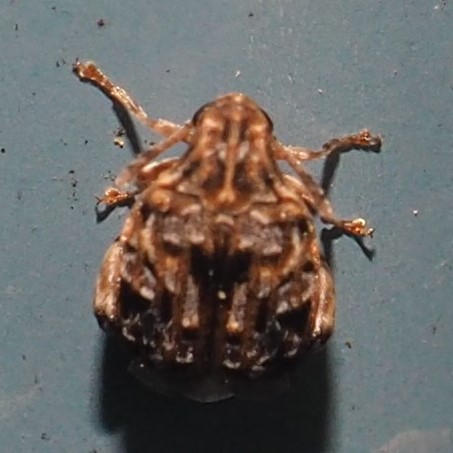
So we can look at some of the Bugs. First is Acanthocephala terminalis, that big Bug with the two very bright yellow-gold segments at the end of its antennae. Next is the Eastern Box Elder Bug, and third is the White-margined Burrowing Bug, which we've seen quite a bit of lately. Last looks like one of the Stink Bugs, which the ID app said was probably in genus Euschistus.
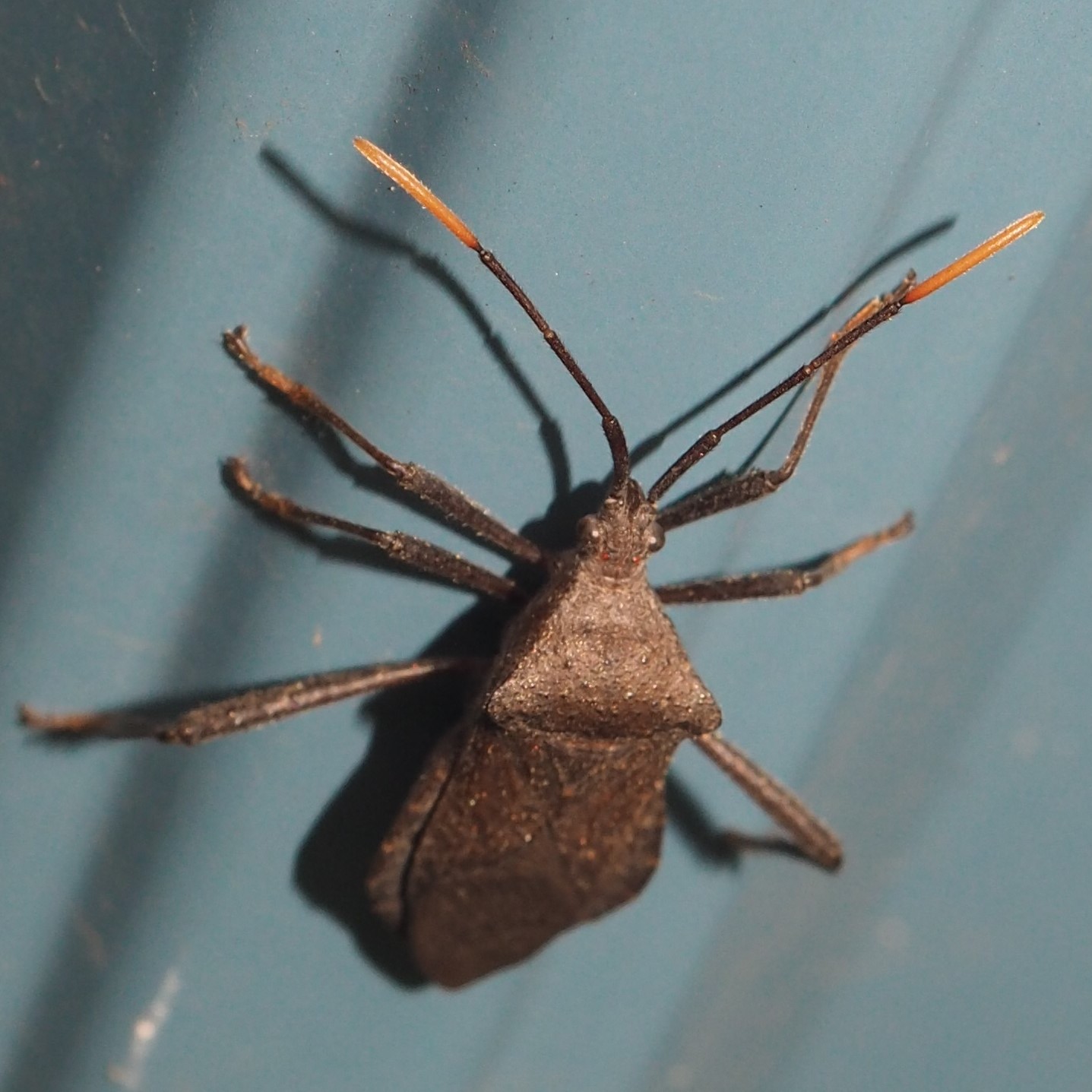

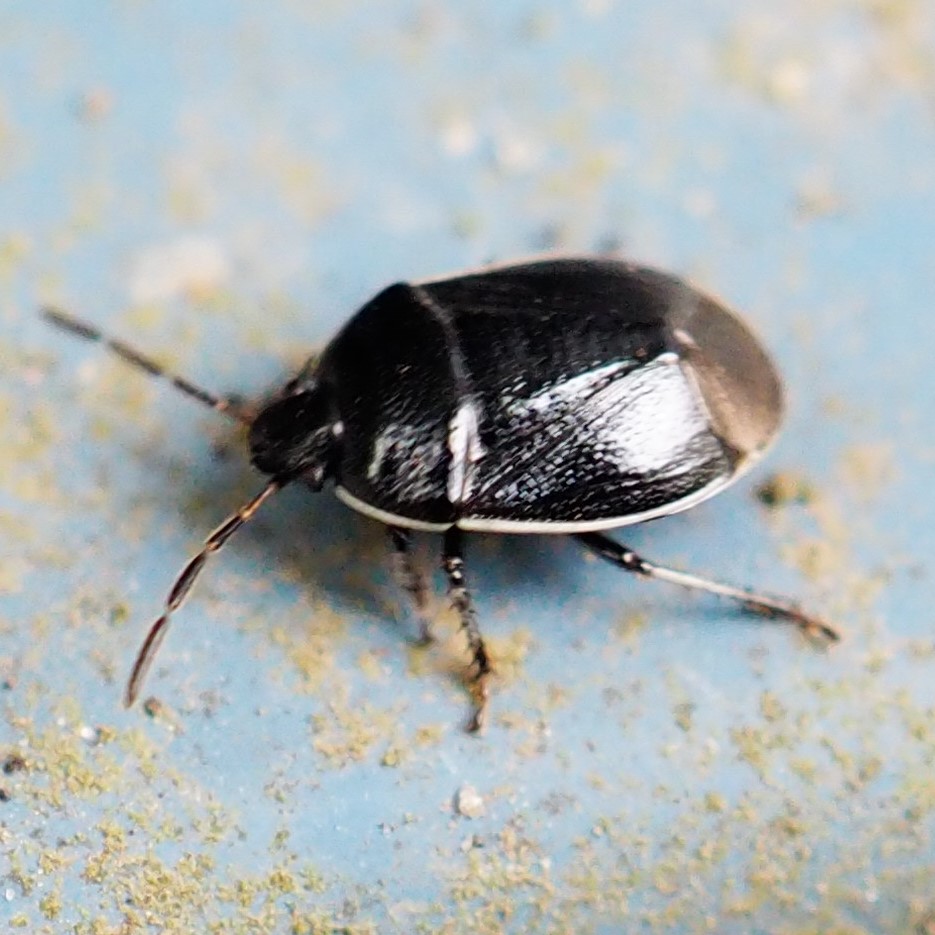

I suppose that a lot of people, especially those of you who live near water, are losing sleep because of the trilling of the American Toads. Sunday night a few Toads moved into my pond. For some reason, only one female was among them to try to mate with more like 6 males! Coming upon twilight, one of the males expressed his desire to the one female. She seemed receptive to this wooing but then another male decided to join the party, and then another. One male tried to mate with another male but was resisted vehemently. After about an hour, and almost sunset, the female realized that this party had been designed clumsily - she got out of the pond, and walked determinedly out of the water entirely and then across the ground - Not such a good start to what might have been an interesting social experiment.
Here you see a male Toad trilling for a mate.. Click the little rectangle after that picture to hear how the toad's song brings on the Albion Special hooting and then the song of birds. Later the next day the Female is back and happily ensconced with a handsome Male. A few more Females have joined the party and from now one it is a happy event. Each pair will now swim around, sleep - Joined to each other for the rest of the day.
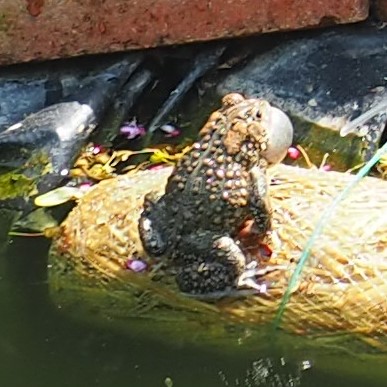

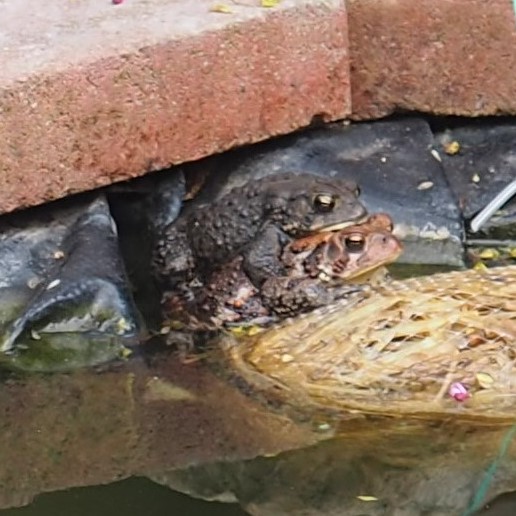
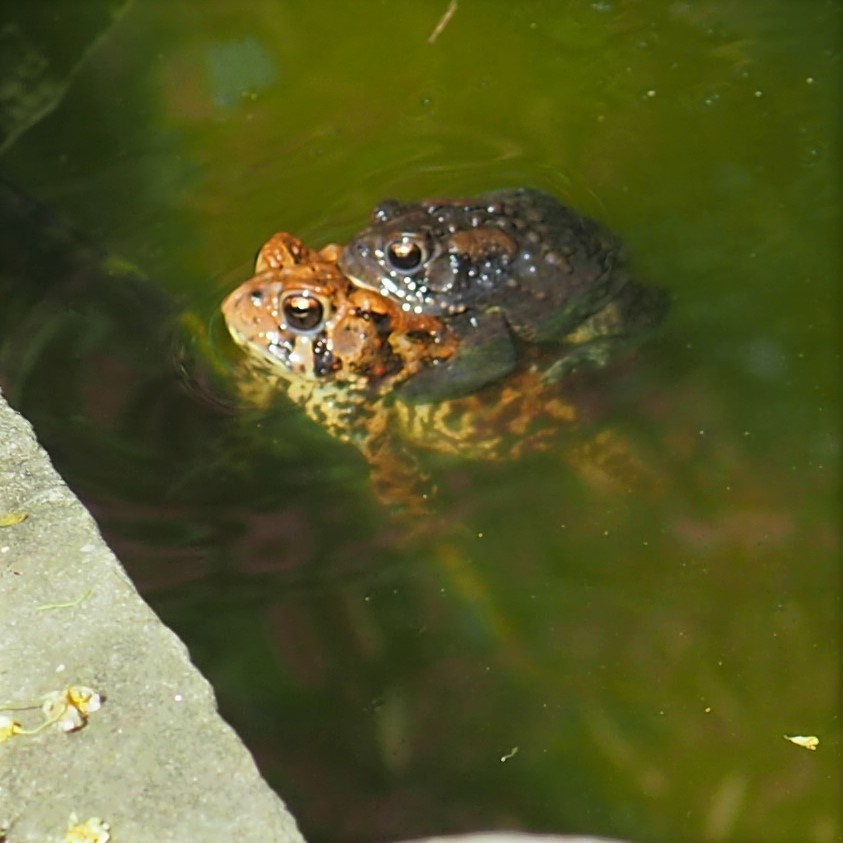
In other years, the Frogs have been somewhat to greatly annoyed by the Toads' moving in on their territory. Maybe because our three little Green Frogs are younger, they seem to tolerate the Toads' arrival. Picture 2 shows two of the three Green Frogs and two of the American Toads sitting calmly near each other. Click or doubleclick to enlarge the various Frogs and Toads - a good training picture of both branches of the Amphibians. There seems to be no interaction at all between the two groups. One more interesting aspect of the mating of two toads (or in another setting two frogs) is that while the male and female are linked, the female is stimulated to lay her eggs and the male to fertilize them - in two long strands made of an egg, a bit of food for the egg, and so on. Picture 3 shows a part of a strand caught on the floating end of a new Lily Leaf. In a couple of days the strands separate when the tiny toad embryo has eaten its way out of the strand and floated off as a Tadpole!
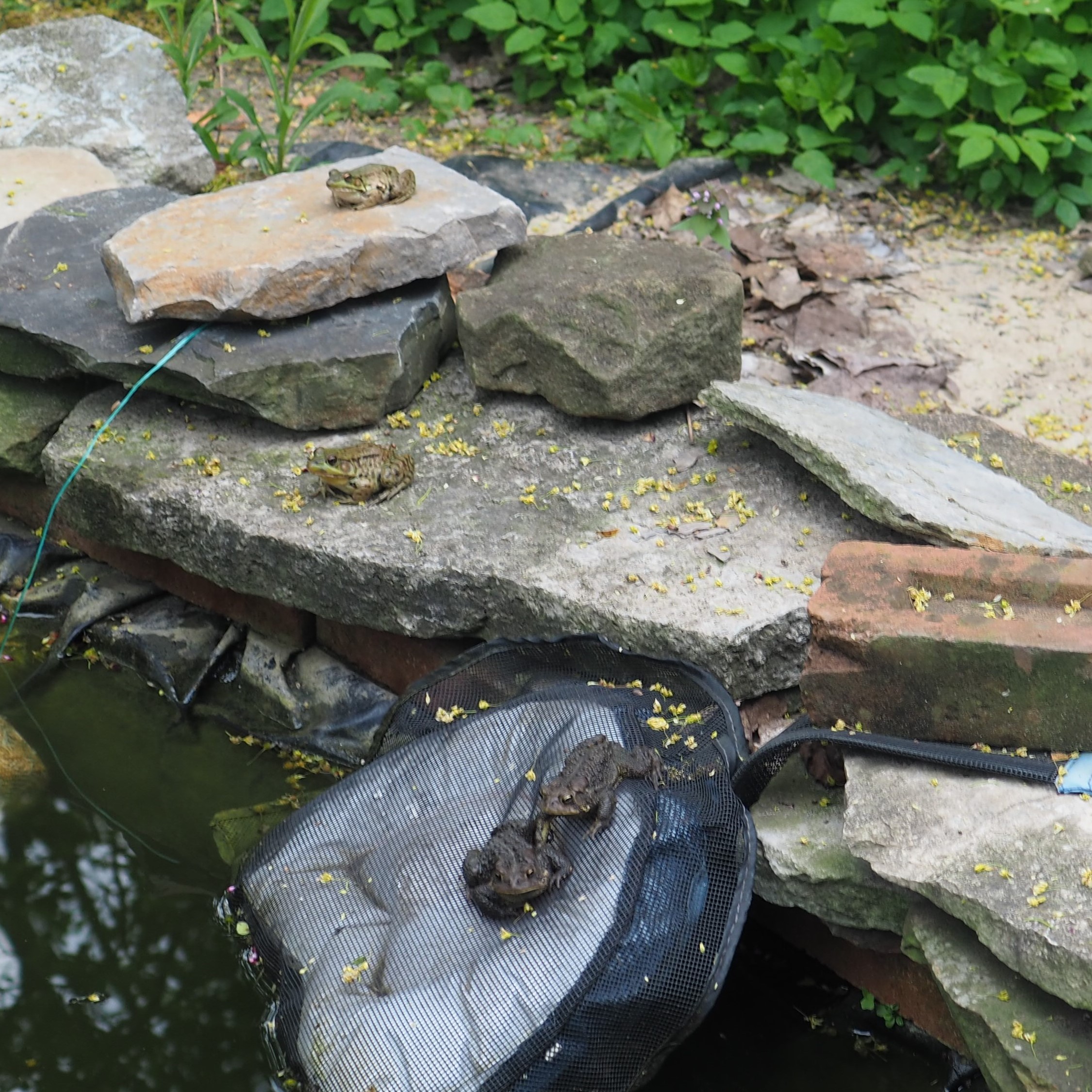
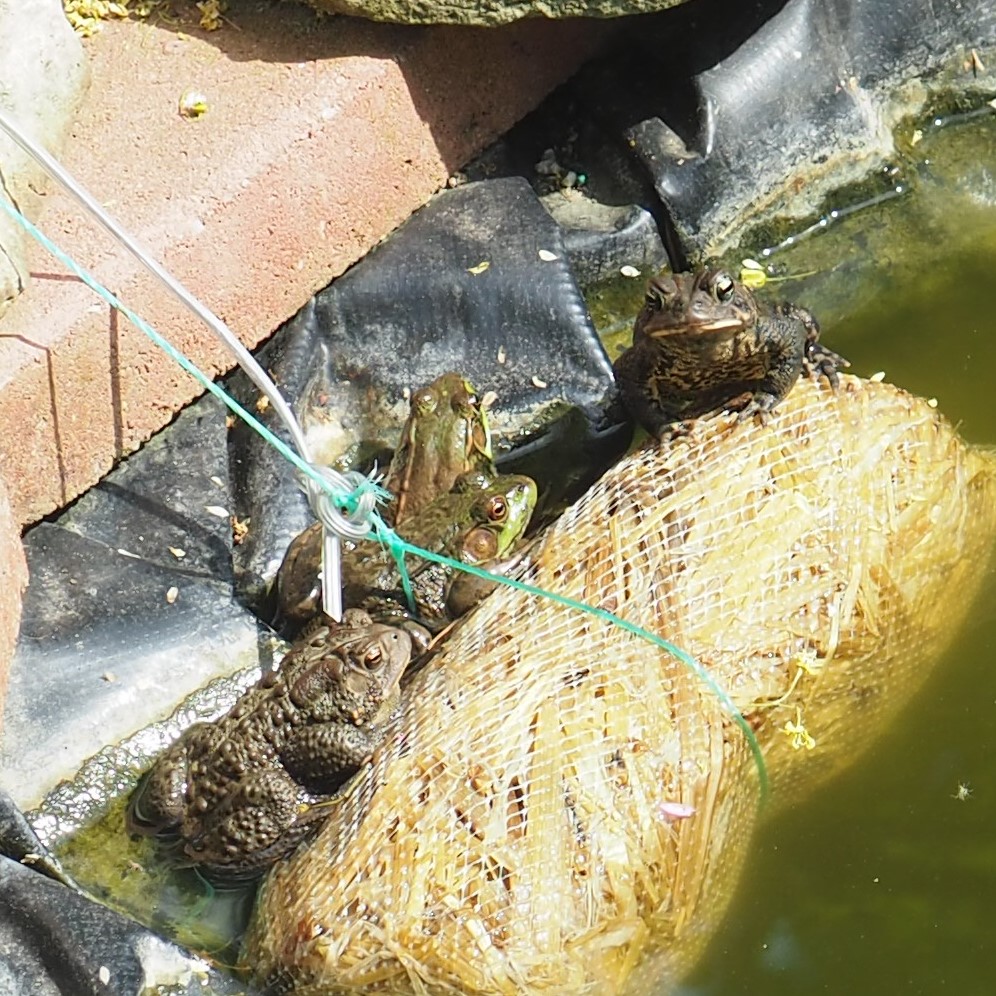
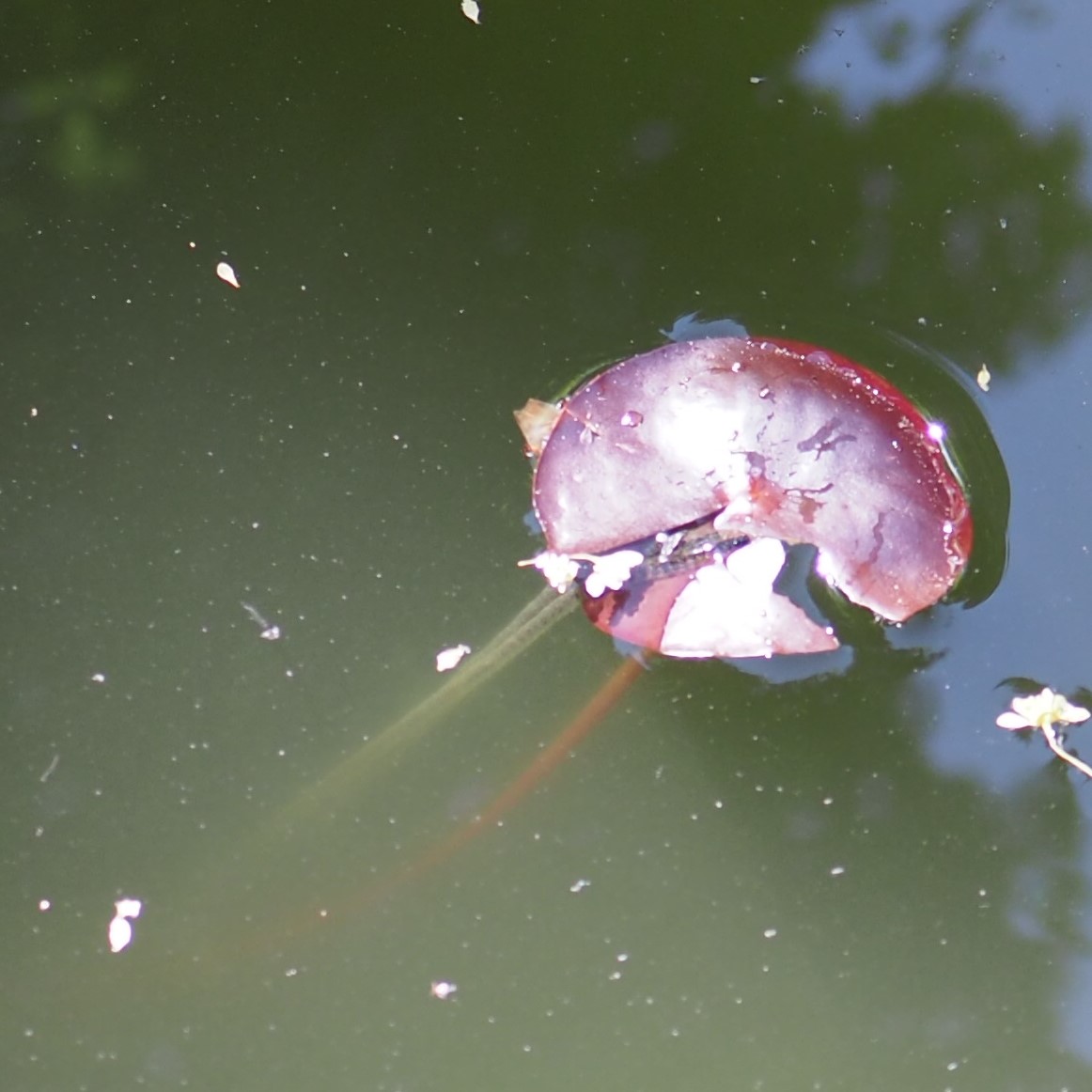
I don't know here, but last week we were expecting the more mature fishes to separate themselves into males and females. Today, partly as the result of the Toad Action, there was definitely a good bit of this separation process. We found out that Last Year's Mama Fish is still a female. In picture 2, we found that Bunky is a girl, Leopard is a boy, Pebbles is a girl, and of course Big Orange is still a boy.
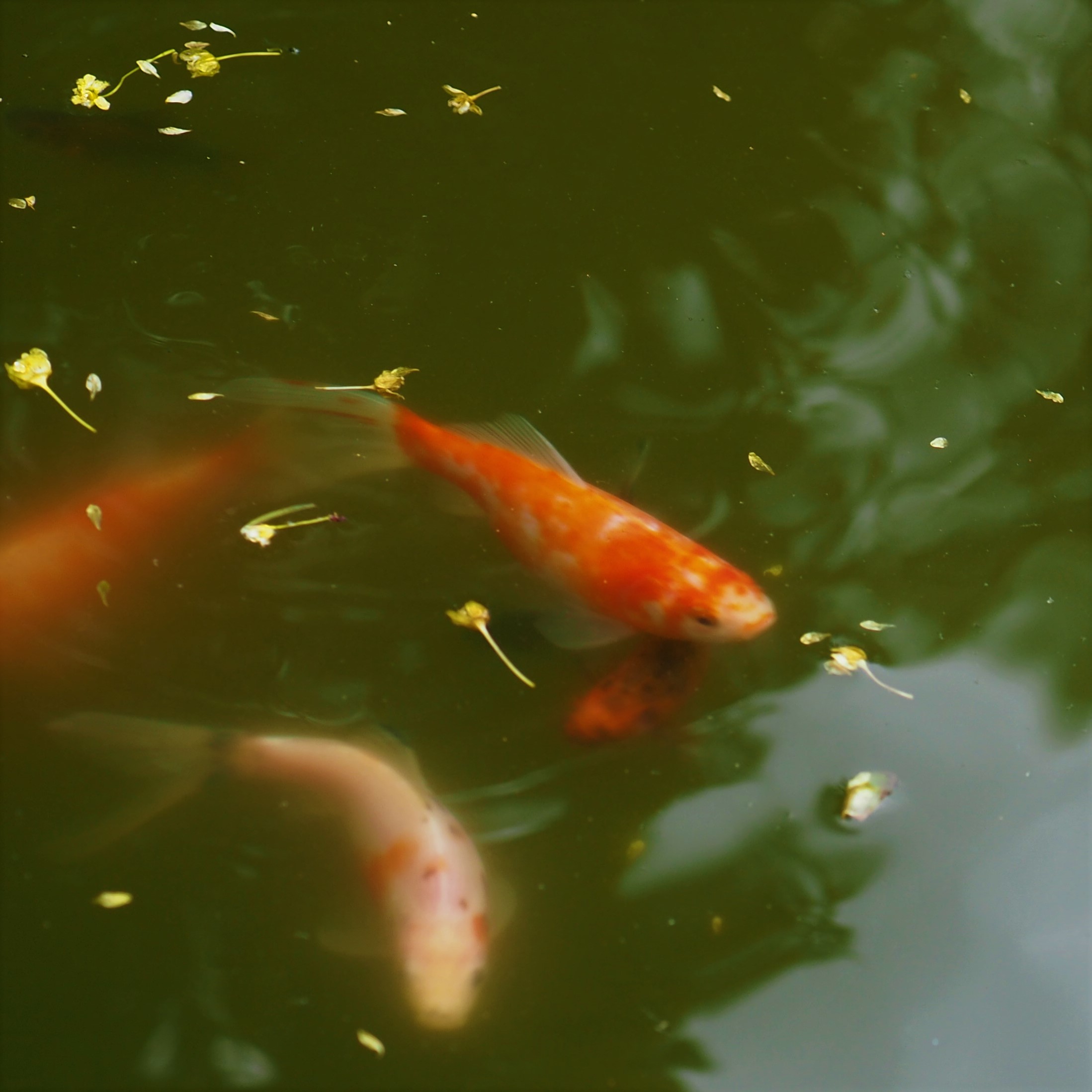
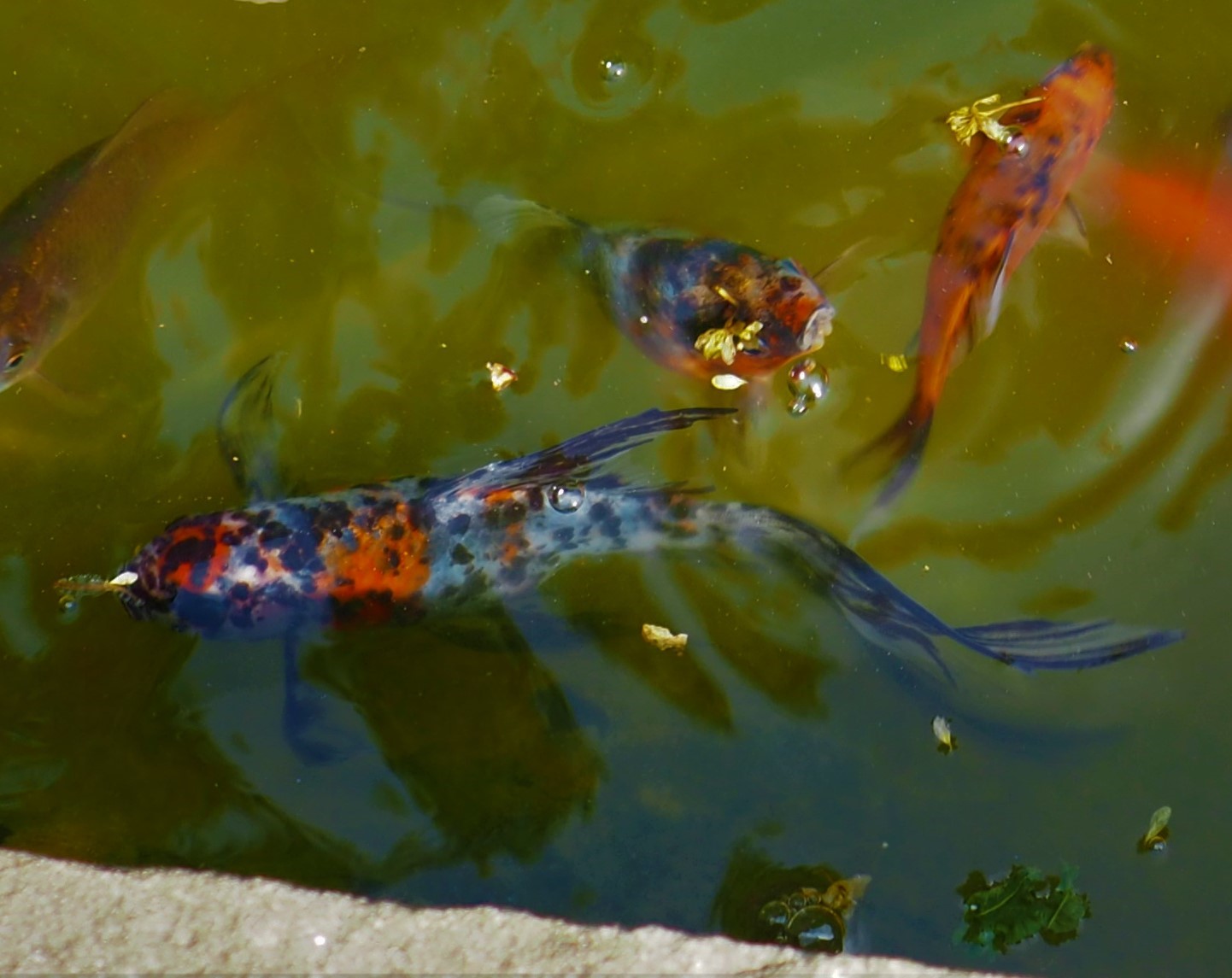
So the Fishies are dividing themselves up into sexes (they are said not to have genders), but the Flies are also having elaborate Mating Rituals. This is especially true among the exotic-looking Crane Flies.
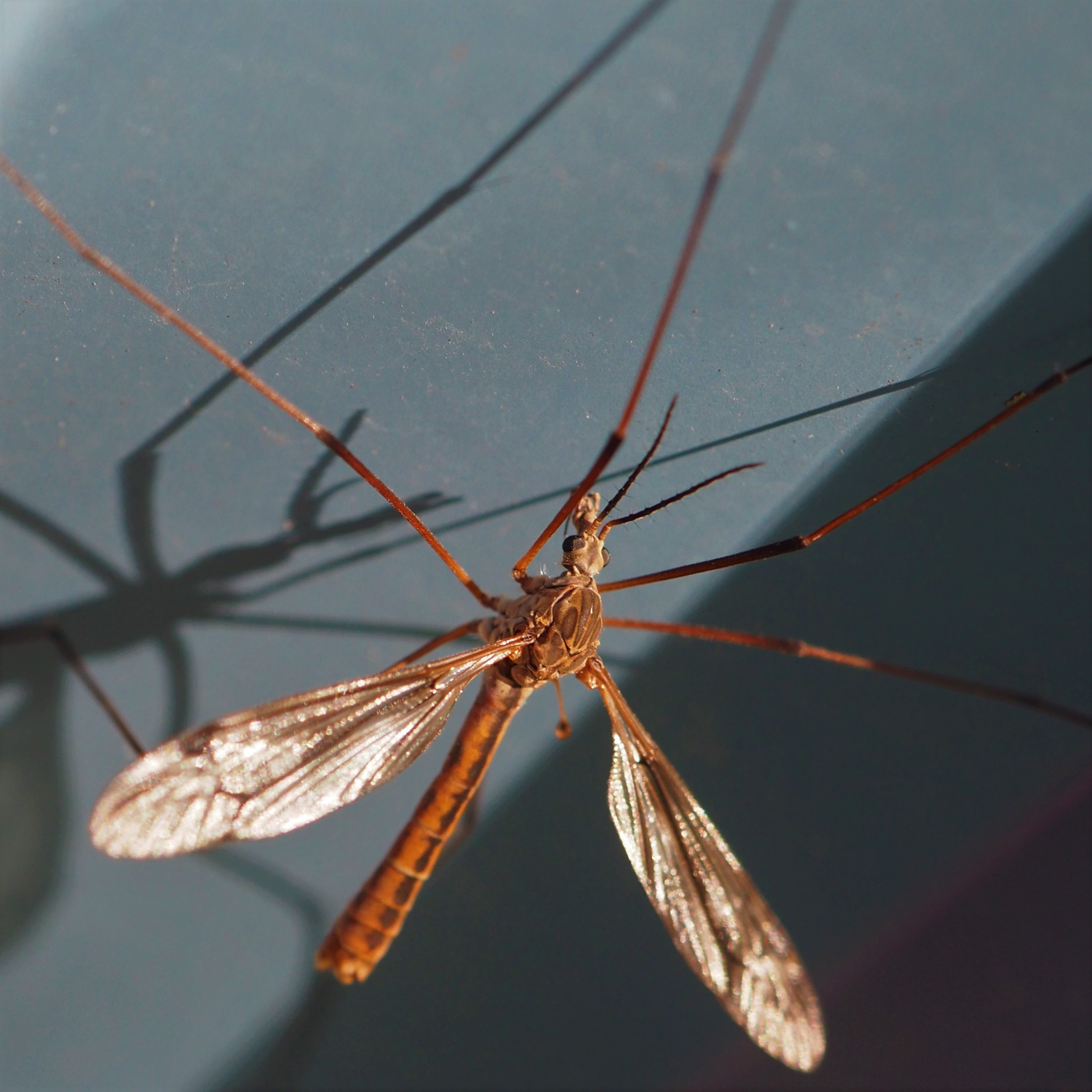
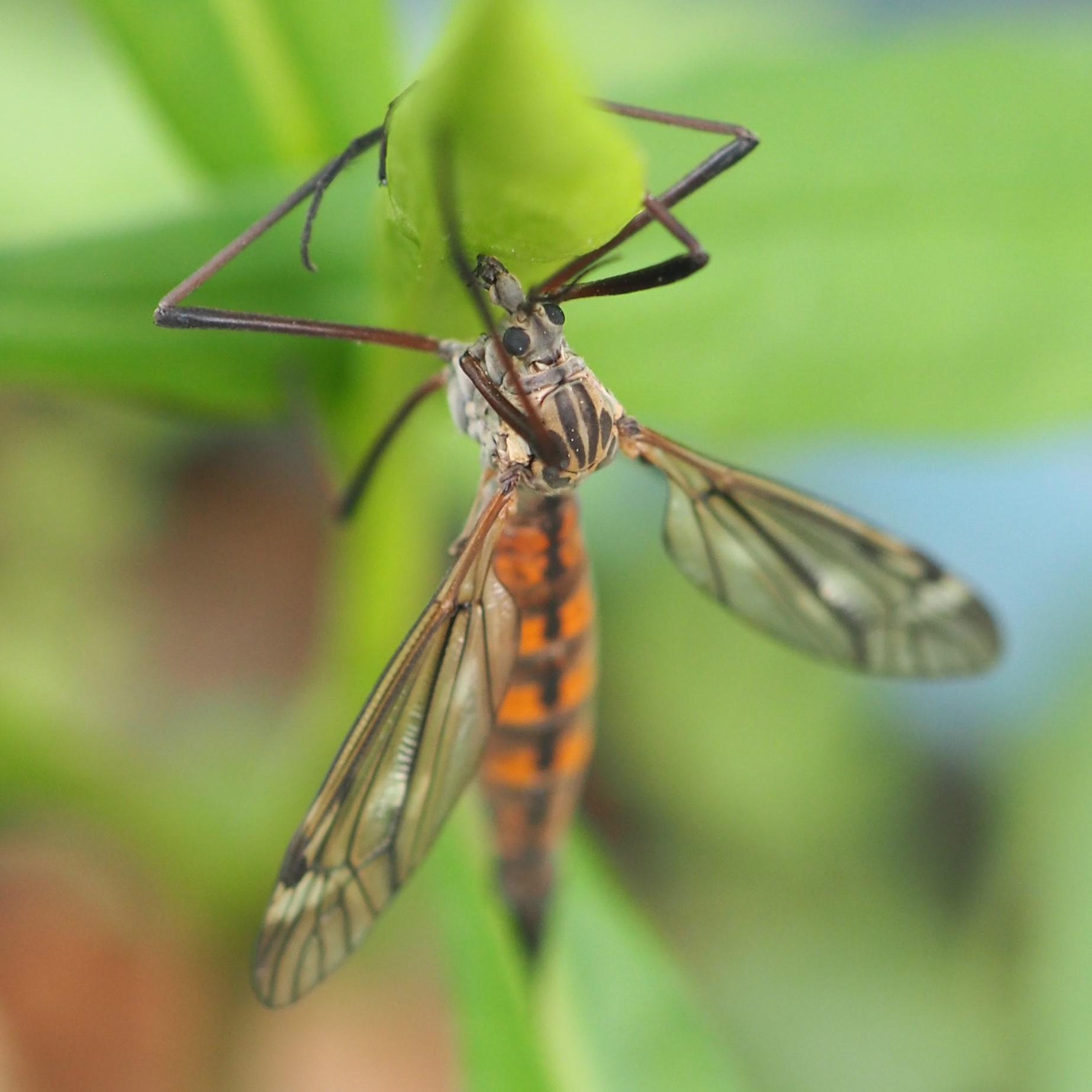
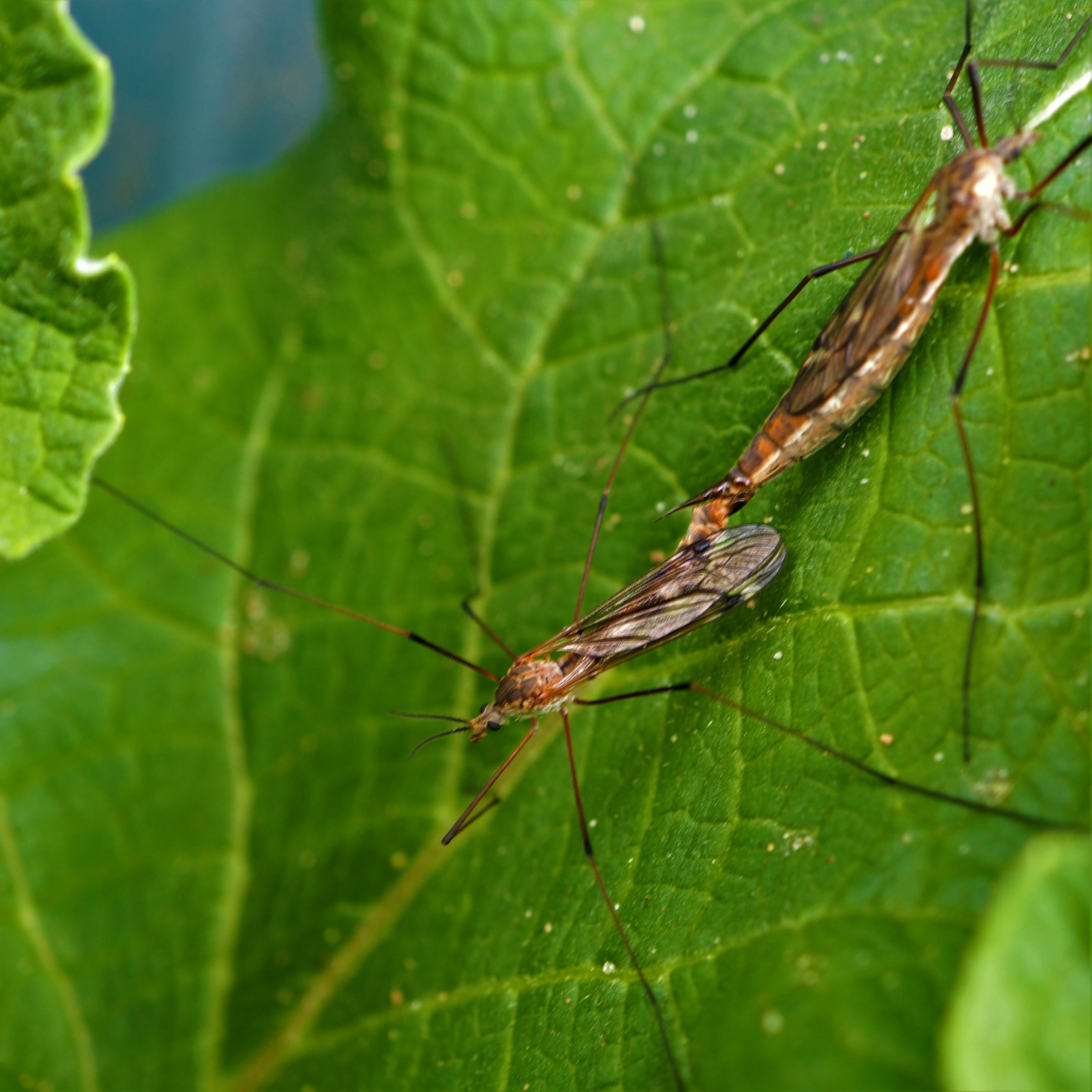
The first time I became aware of the beautiful March Fly, Bibio femoratus, the second-half of its name
referring to the lovely bright red of the femur joint on several of its legs, what I found irritating
was that the March reference was another product of the oddness of the names of the Spring months. I
think I HAVE seen one in April, but never in March. Of course, it's an example of one of the many kinds of sexual alignment among the creatures. This one is called "girl on top upside right", "boy on bottom, upside down". And it is the same alignment as that last Crane Fly pair. Picture 2 shows the male by himself. Oh. Here is something I meant to include when the Toads had left. I was sitting in my chair by the pond and suddenly heard someone say "galoomph" quietly near my ear. When I looked toward the speaker, it was one of the larger Green Frogs. I repeated this greeting and was rewarded with a repeat. This is another clue as to the age and sex of this Green Frog. For one thing, only adult male Green Frogs speak like that. I've been watching them all to see how several properties are coming along. Besides this speaking ability, the tympanic membrane (the eardrum) in a male is larger than his eye circle. His attainment of this ability probably tells us he is approaching the age of maturity. Last year, I was sitting talking to him, and my son came outdoors and said something to me. Immediately Froggie spoke clearly and loudly to Chaim, as if to say, "Hello fellow guy person". We'll see how this plays out this year.
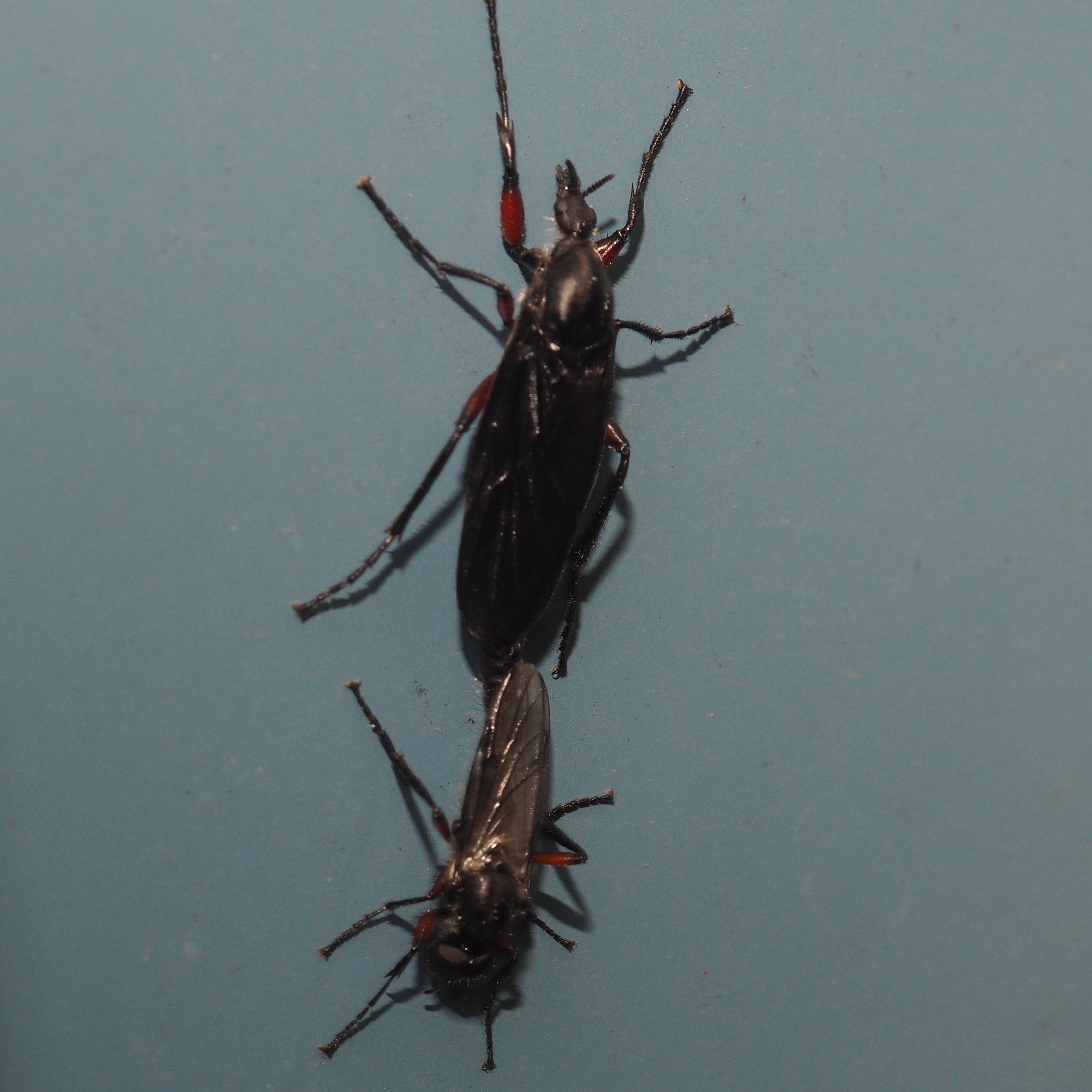

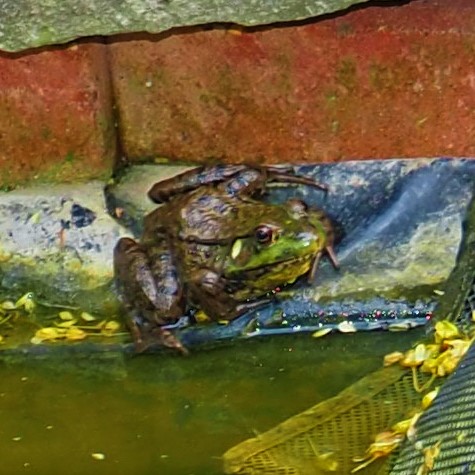
Let's take that walk now through the yard. Those Dandelions at least are good at attracting little bees. And this little bee has a nice green iridescent streak.
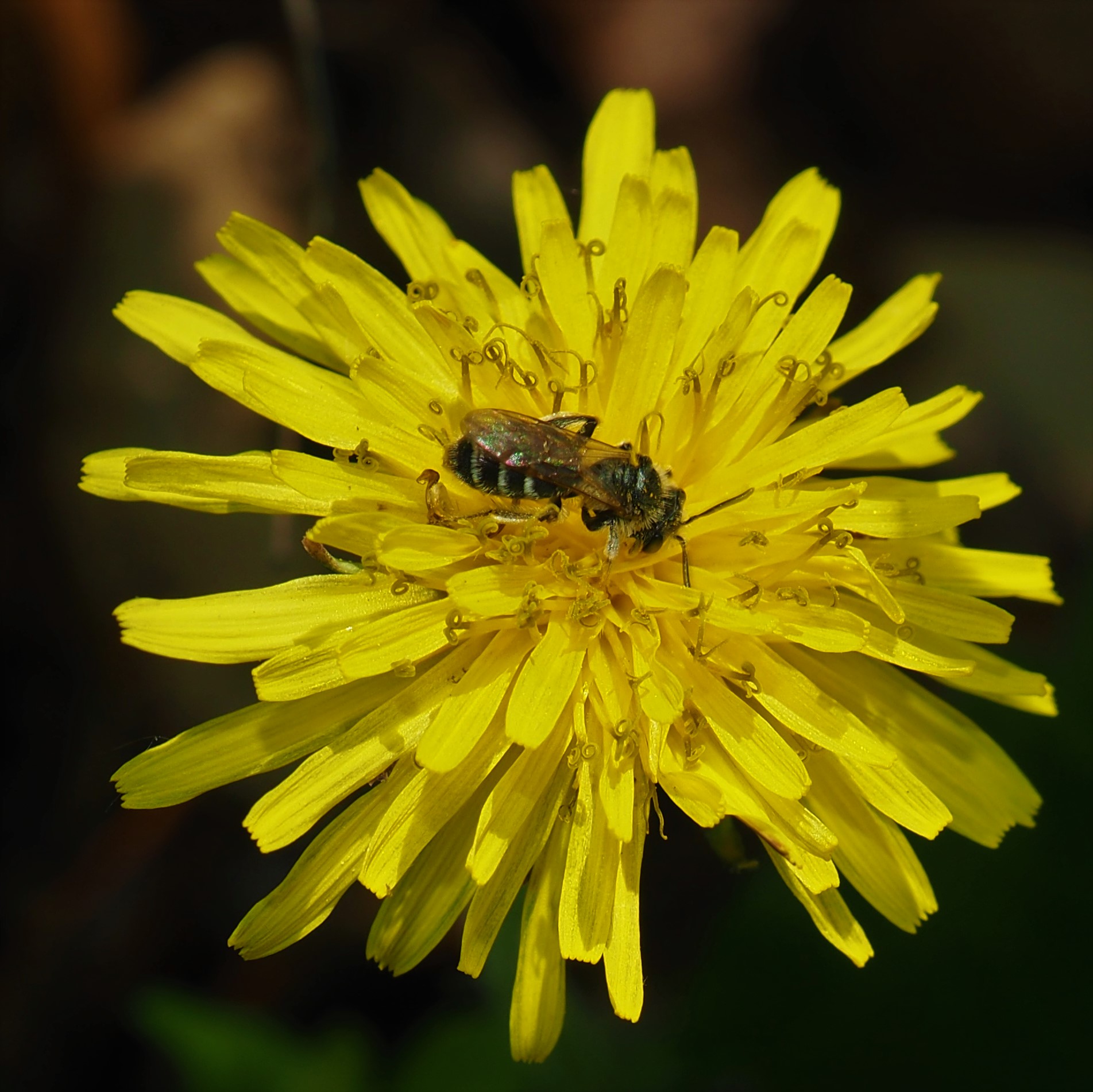
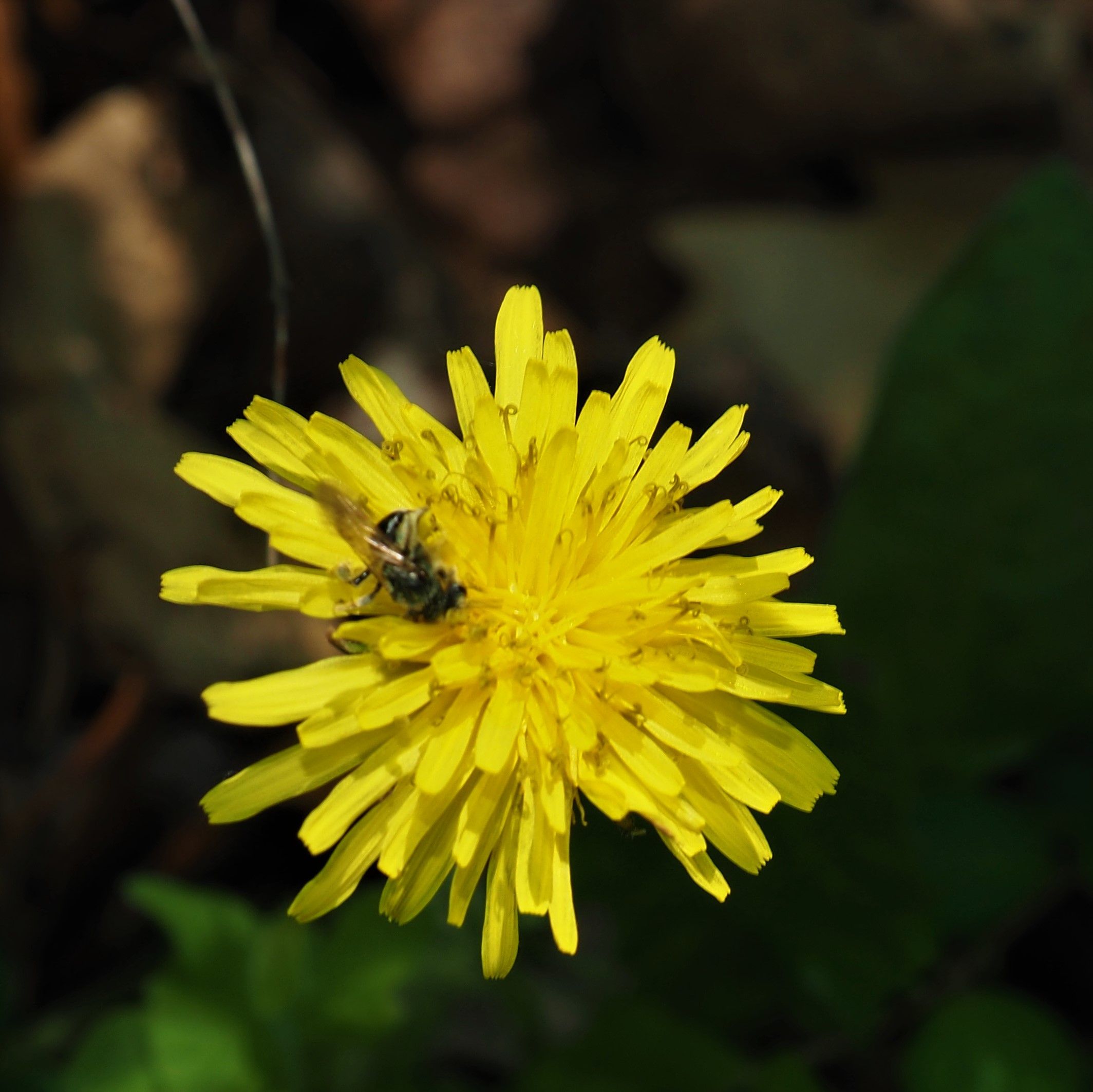

First thing I saw when I opened my mail yesterday morning was Mary-Ann Cateforis' yard. She keeps her Potsdam (NY) neighborhood hopping with her lovely original plants and flowers. She says,
"Not mowing in May should be easy on our front curbing where it's mostly violets and relatively short grasses. Wall pepper (Sedum acre) is the brownish ground cover on the left. Pussy toes back by the front porch." (Martha) I've been posting our white and blue violets. They have more dark bits than these mostly pure white and blue faces.
 <
<
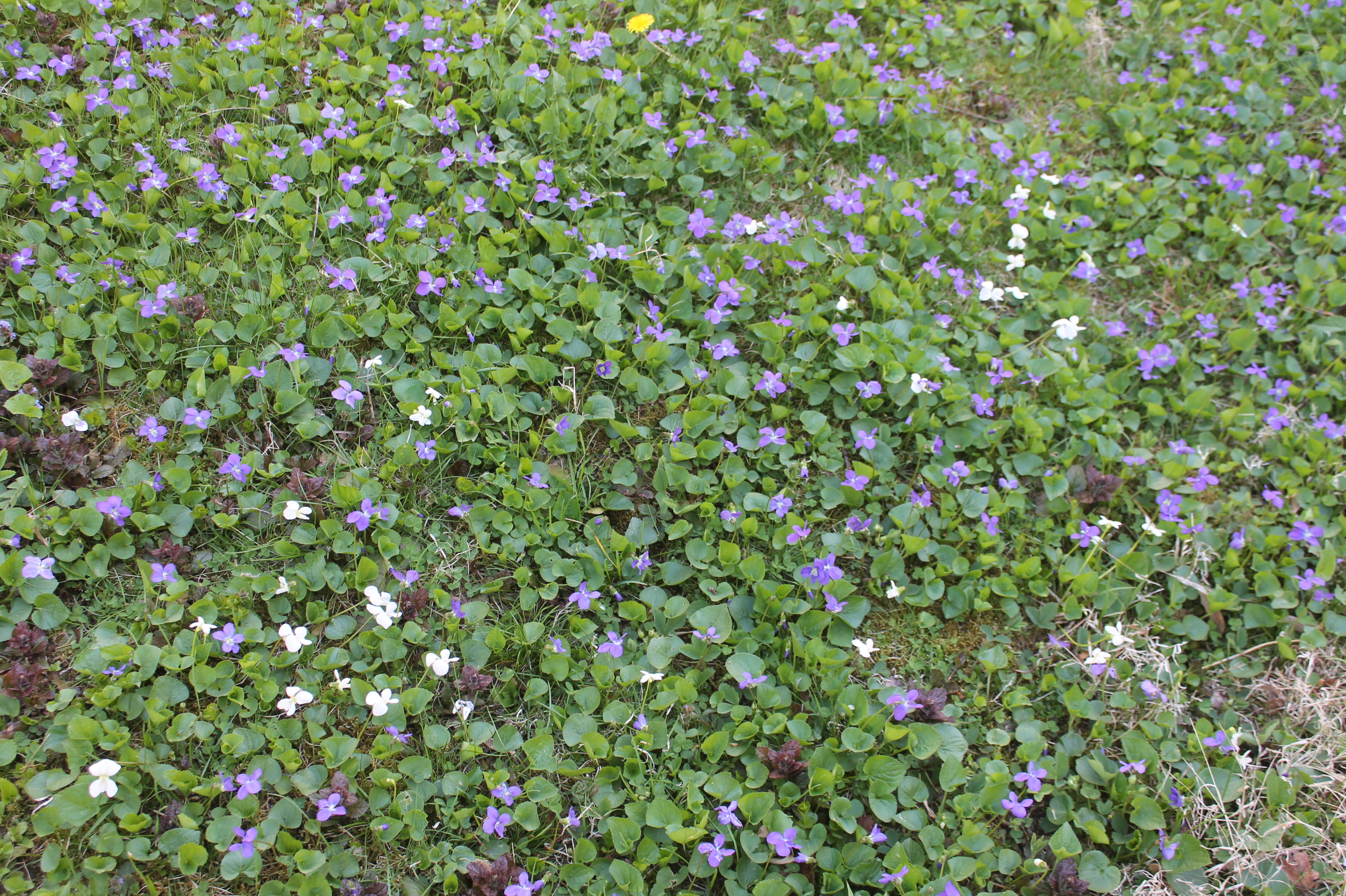
Let's take a quick walk through Deb Seely's yard. She picked the right color of Weeping Redbud - gorgeous pink, not like my wild version. Her Lily is also amazing. Best of all, her Milkweed is up in her side yard.
 <
<


While we're just next door, here are some of my Grape Hyacinths - still attracting their share of pollinators, like this tiny Western Honey Bee.
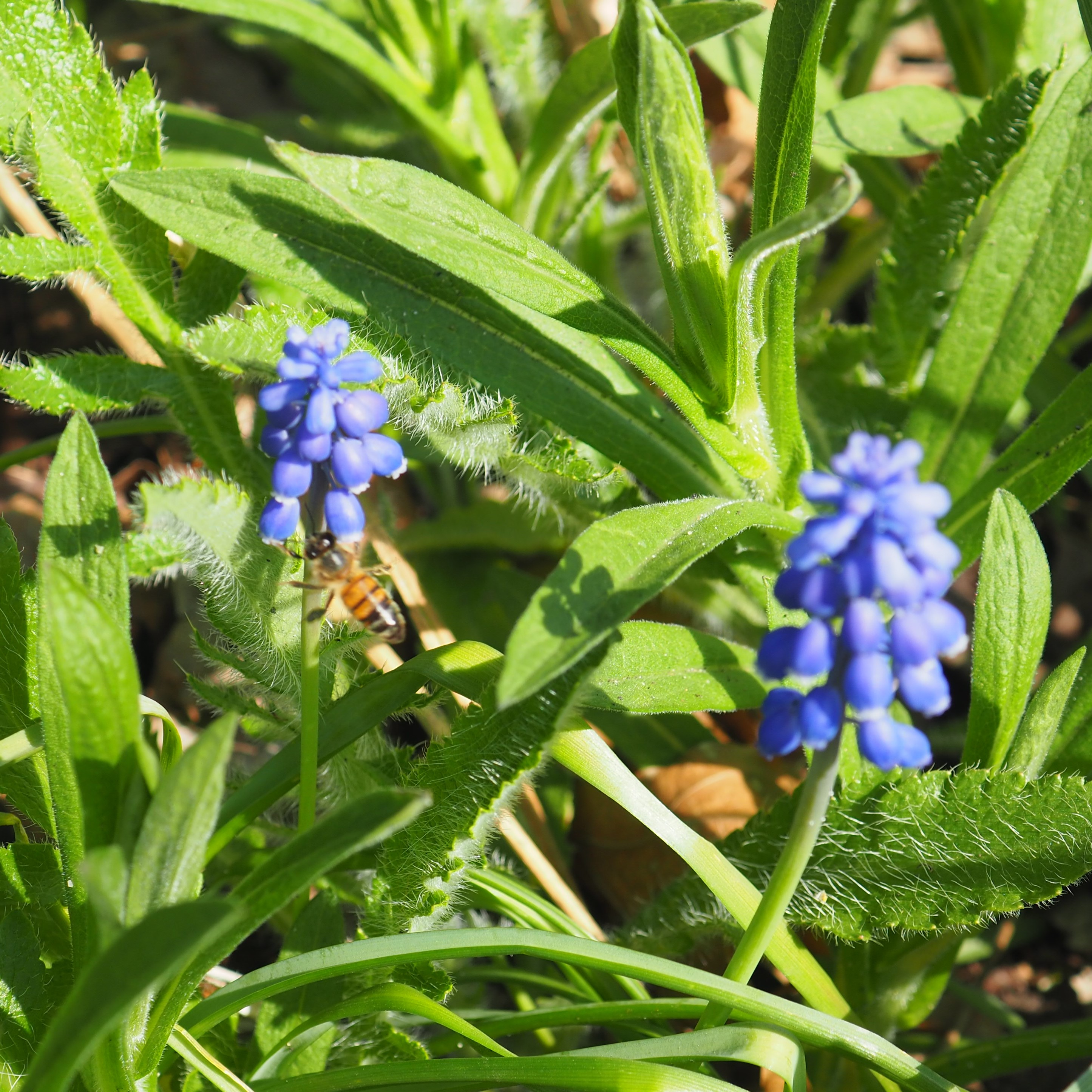
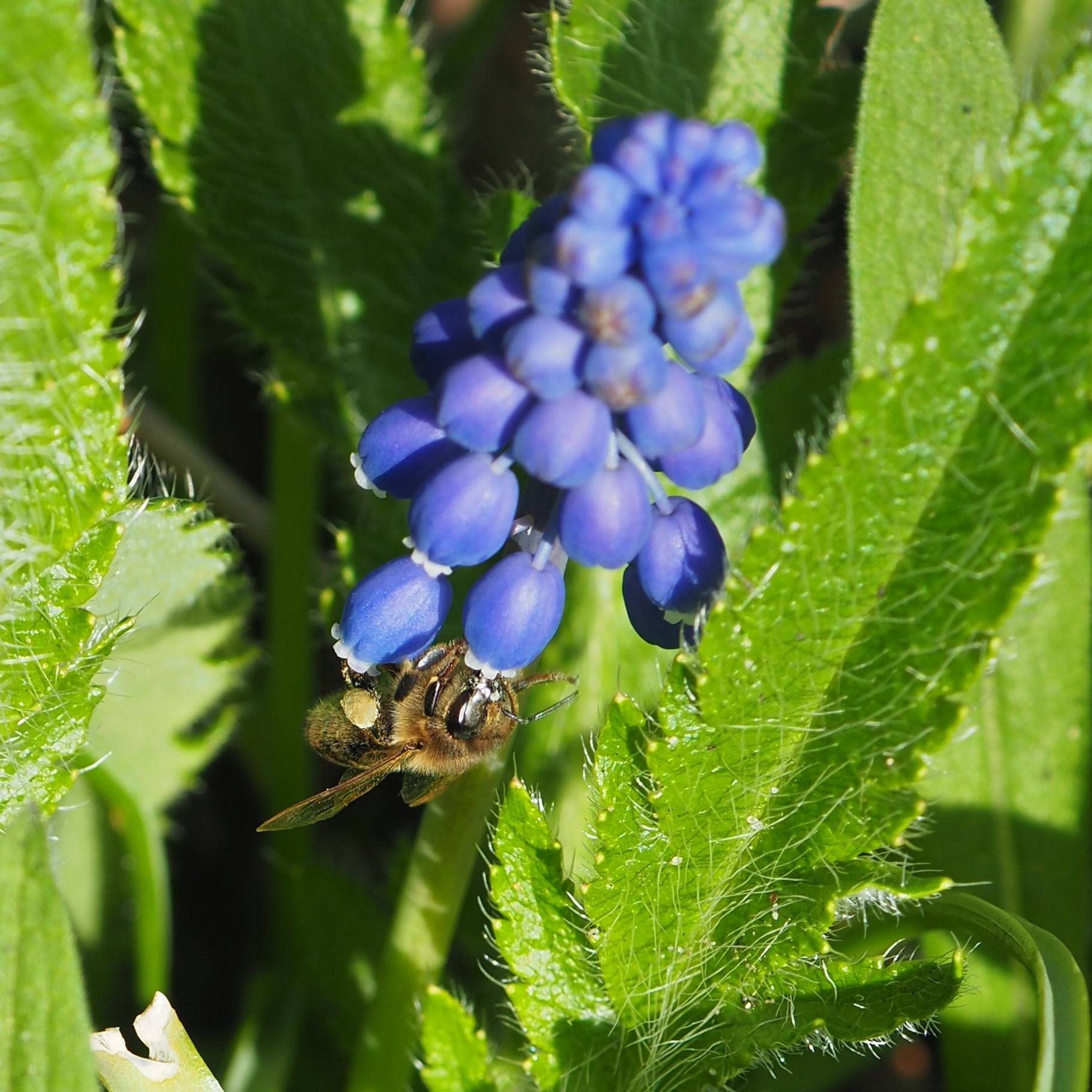
Here is that bank of Celandine Poppies, but it seems now to extend back to the farthest fence. Anyone want a start of those beautiful Poppies, be warned! Still they would make great presents to someone who dominates all those meetings. On the other hand, when I moved into this yard in 2088, the Virginia Bluebells were already happily ensconced in the back back yard. It hasn't spread much since then, but the flowers may help you make up your mind. I love them.
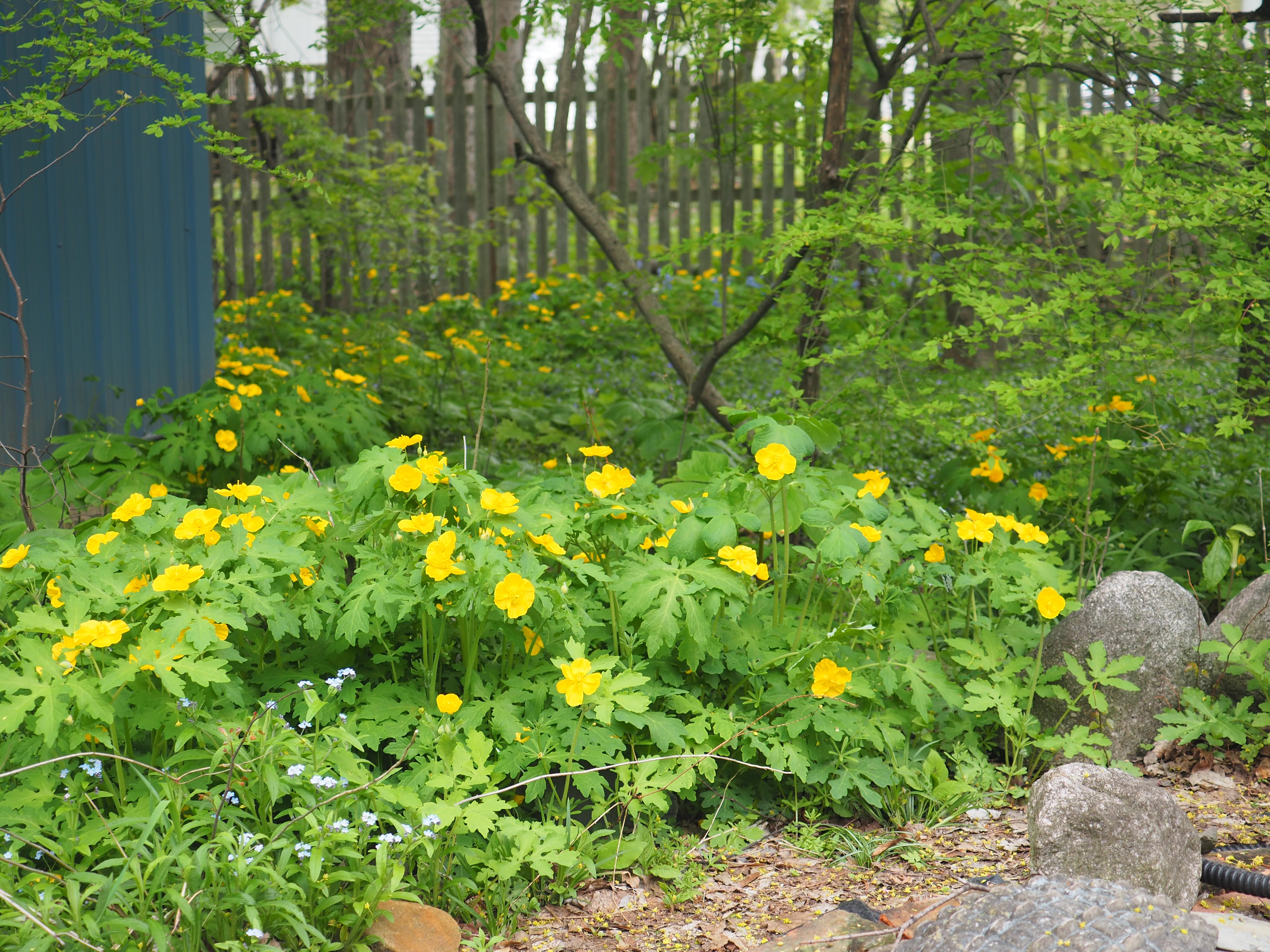
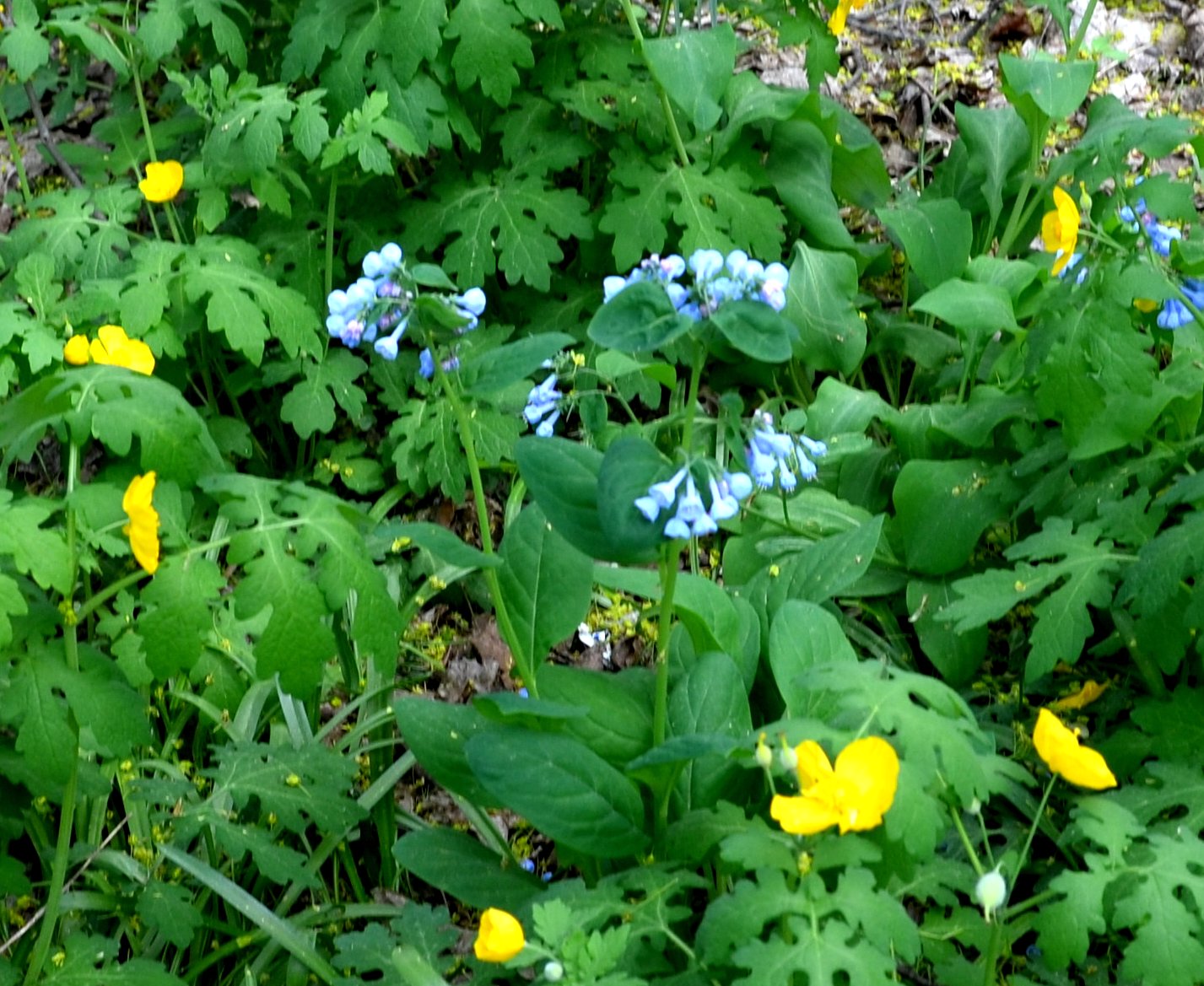

Remember when the Wild Geraniums had but one flower? They're doing a bit better now. So are the Forget-me-nots.
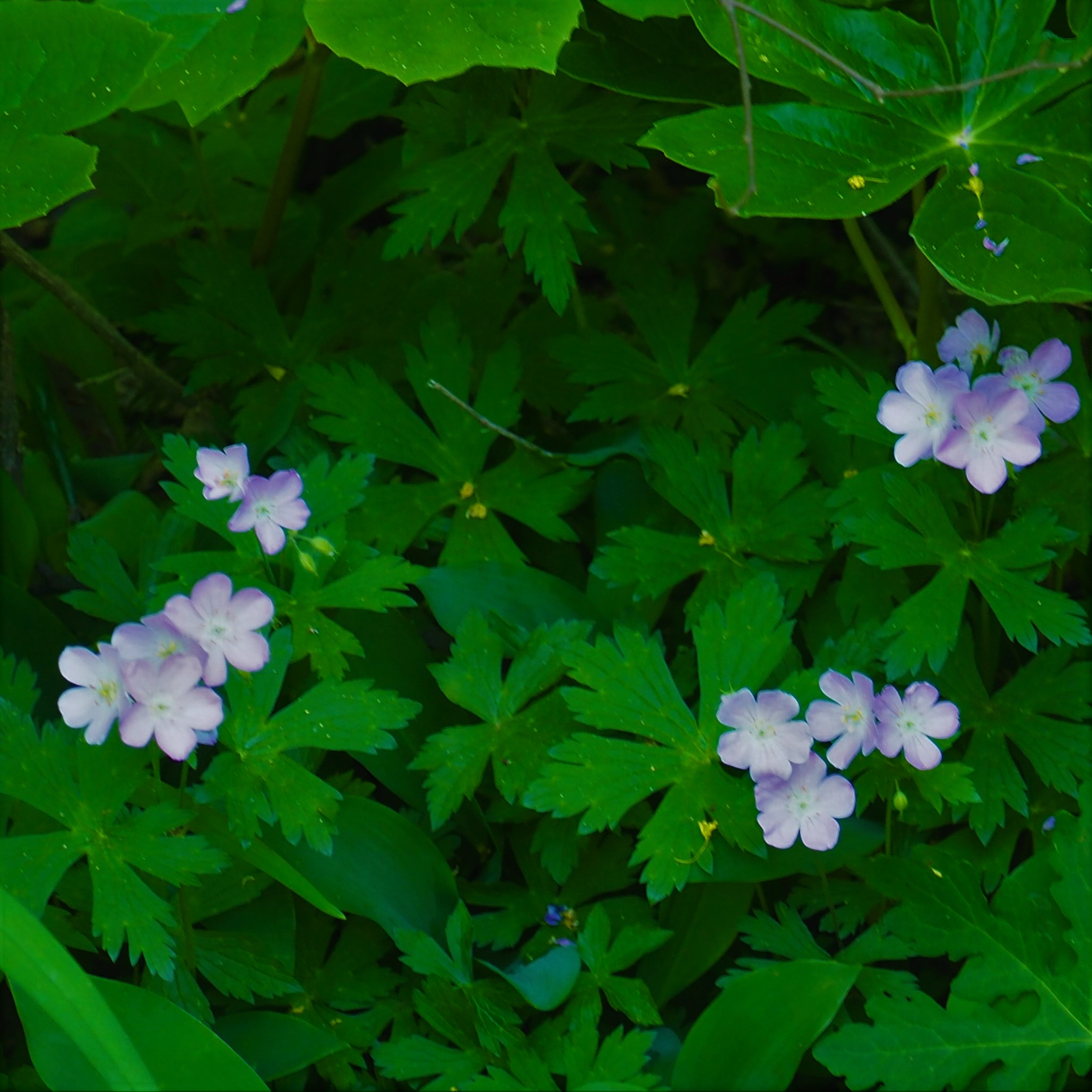
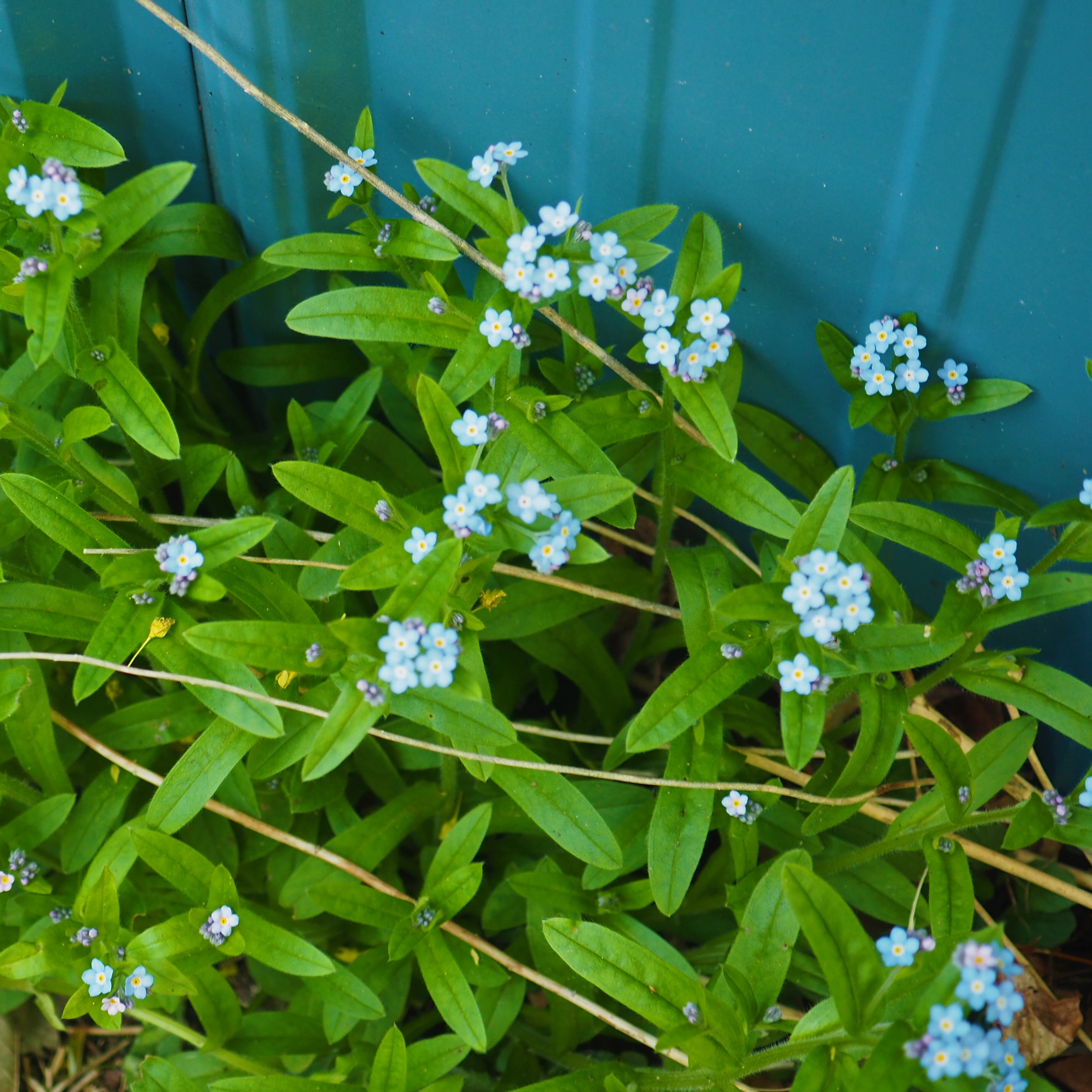
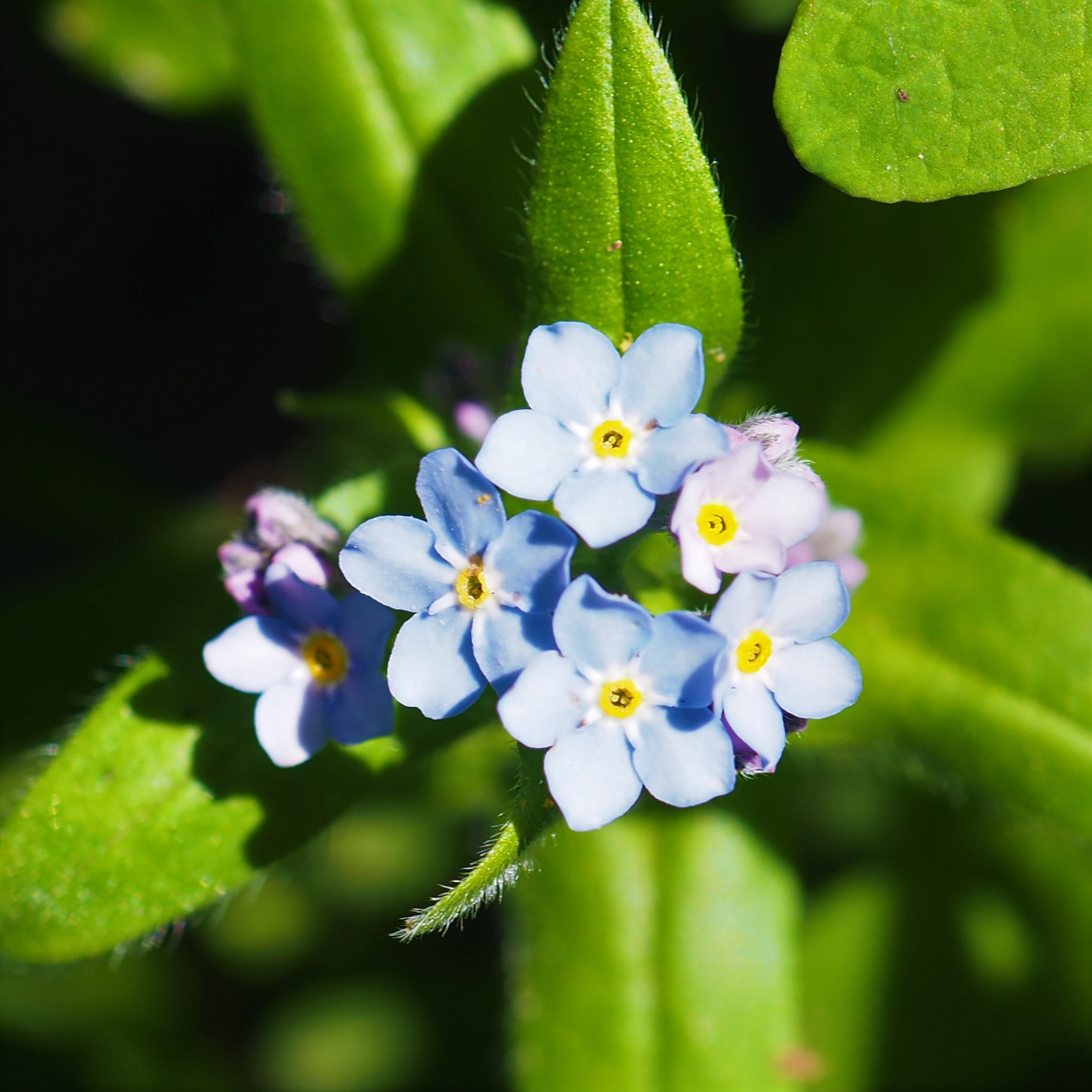
The Hellebore-Epimedium combo is still one of my favorites. The leaves of the Solomon's Seal are intriguing, the way each one is folded around all the others. In picture 3, taken 5 days later, you see the leaves all opened out, and all the little hanging flowers that the Hummingbirds like so much.
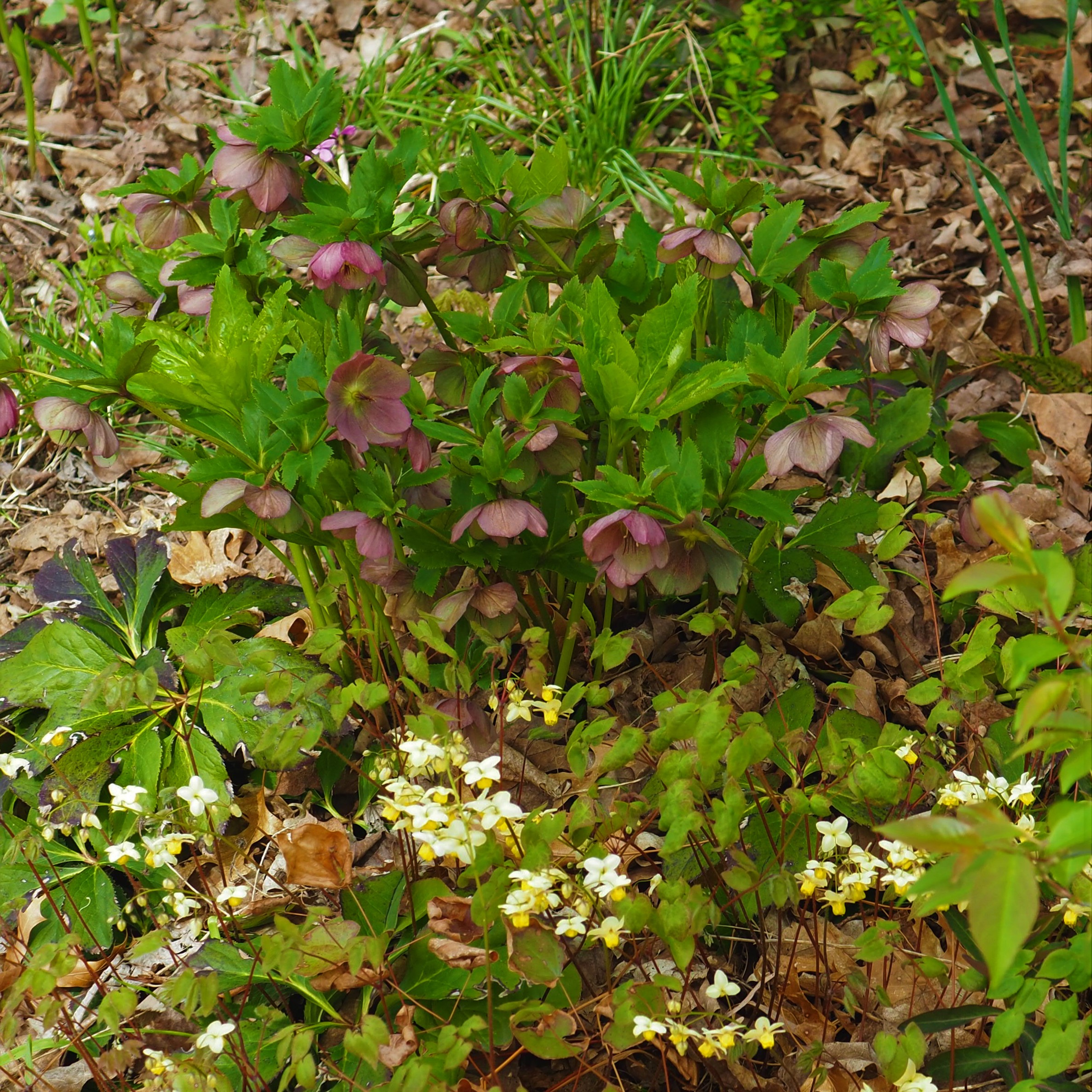


Unlike many of the past weeks, when I haven't seen many kinds of Spiders, we seem to be coming back into a riper season for them. Here is a tiny Crab Spider.
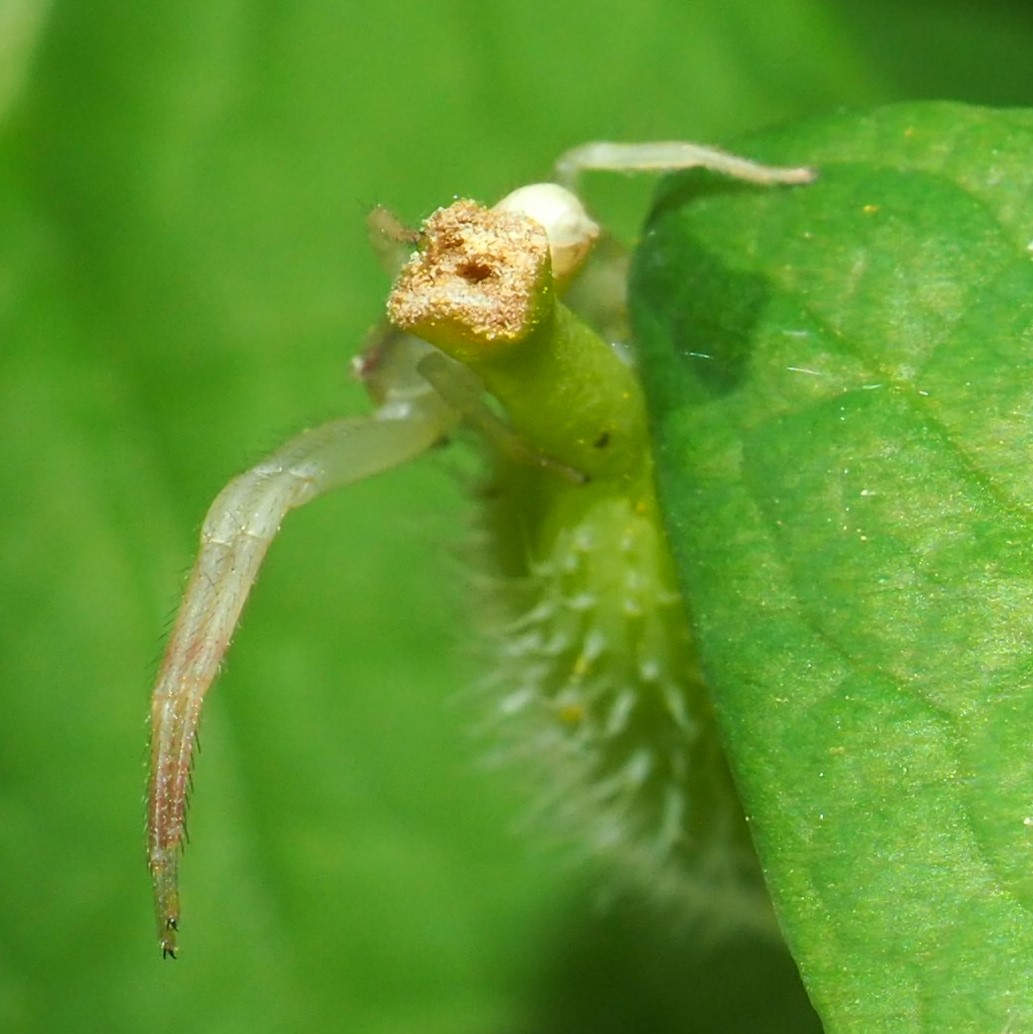
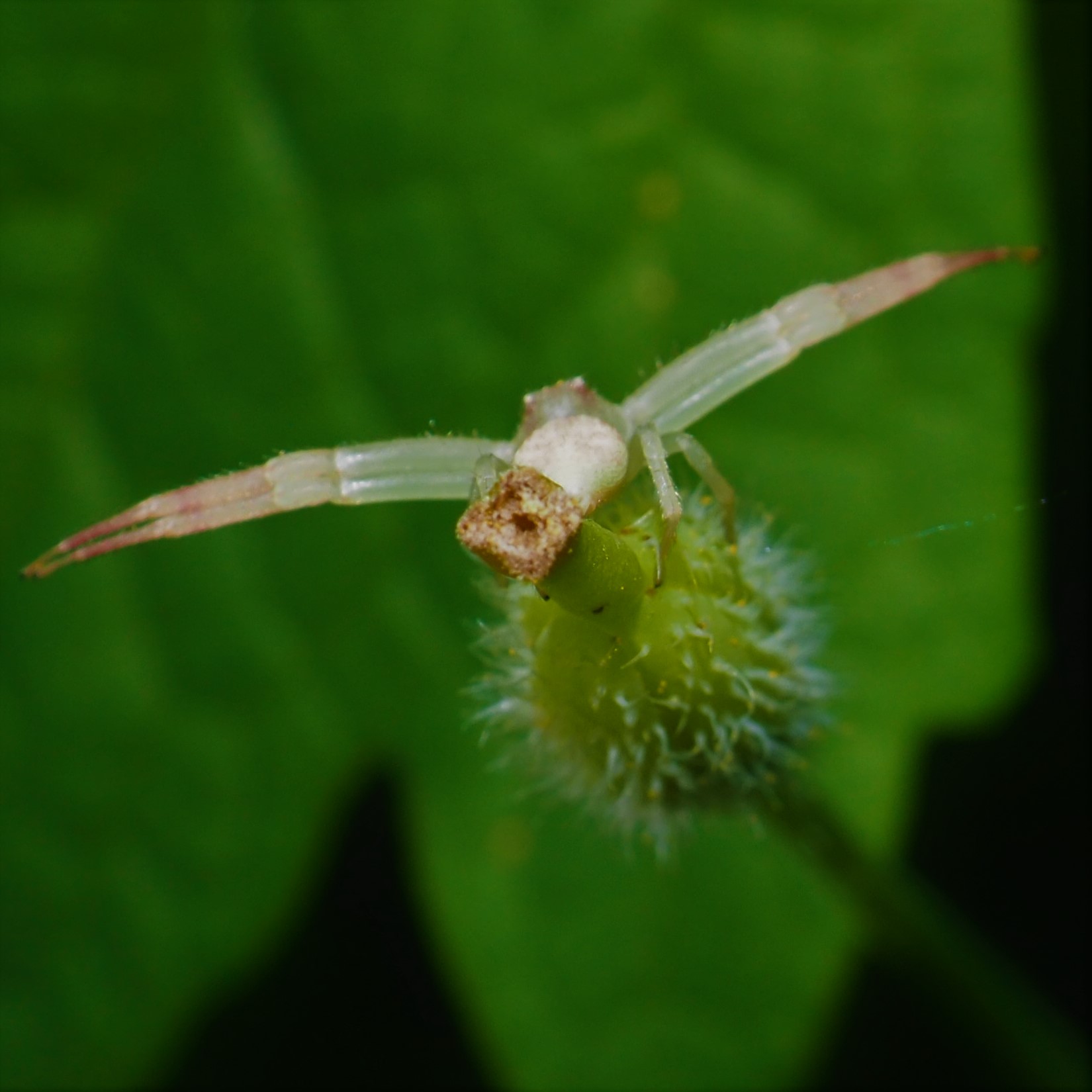
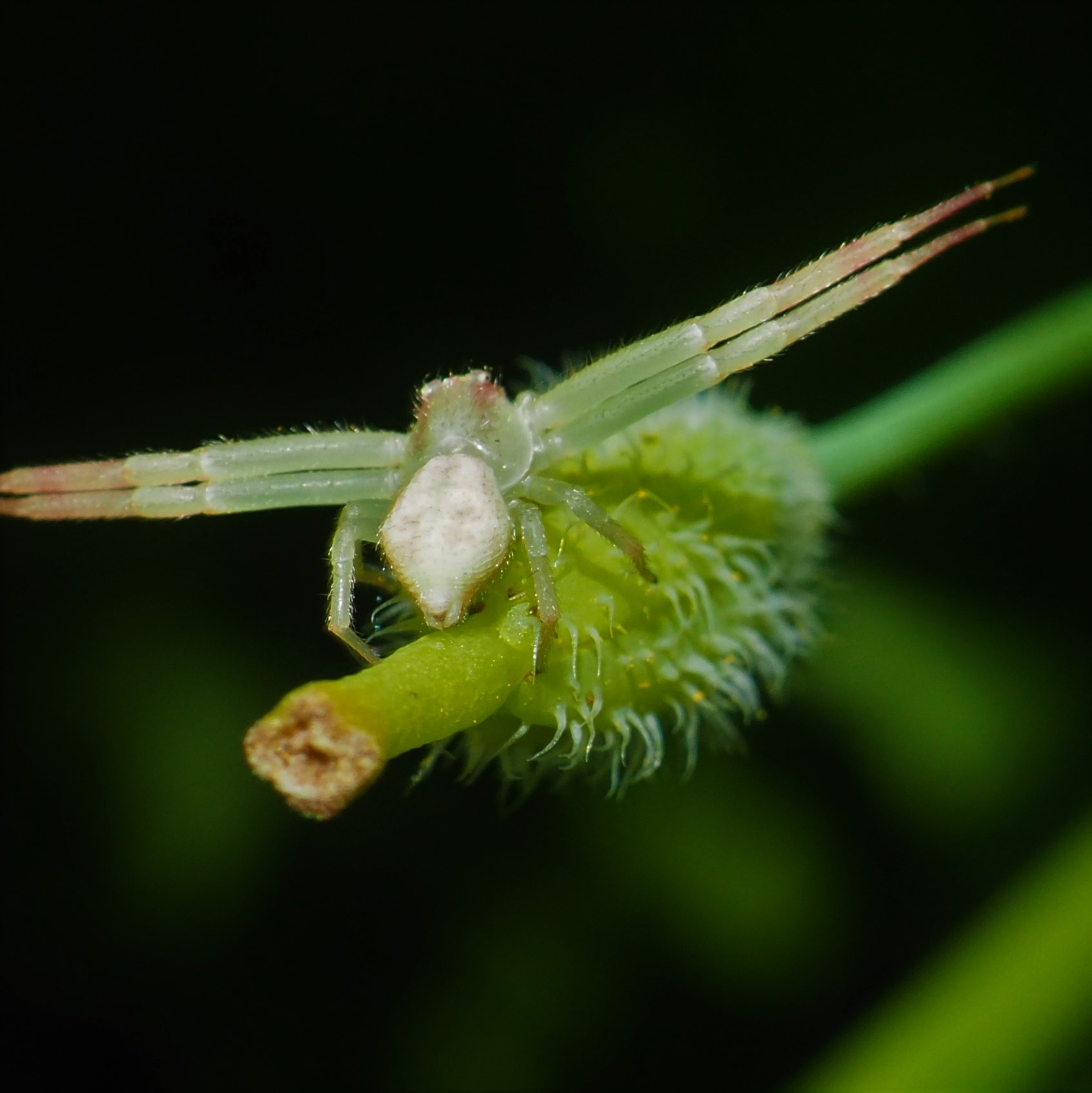
Here is another kind of Crab Spider. It's probably from the genus Mecaphesa. Note that the Crab Spiders tend to hold their two longer front legs together to form a "claw".
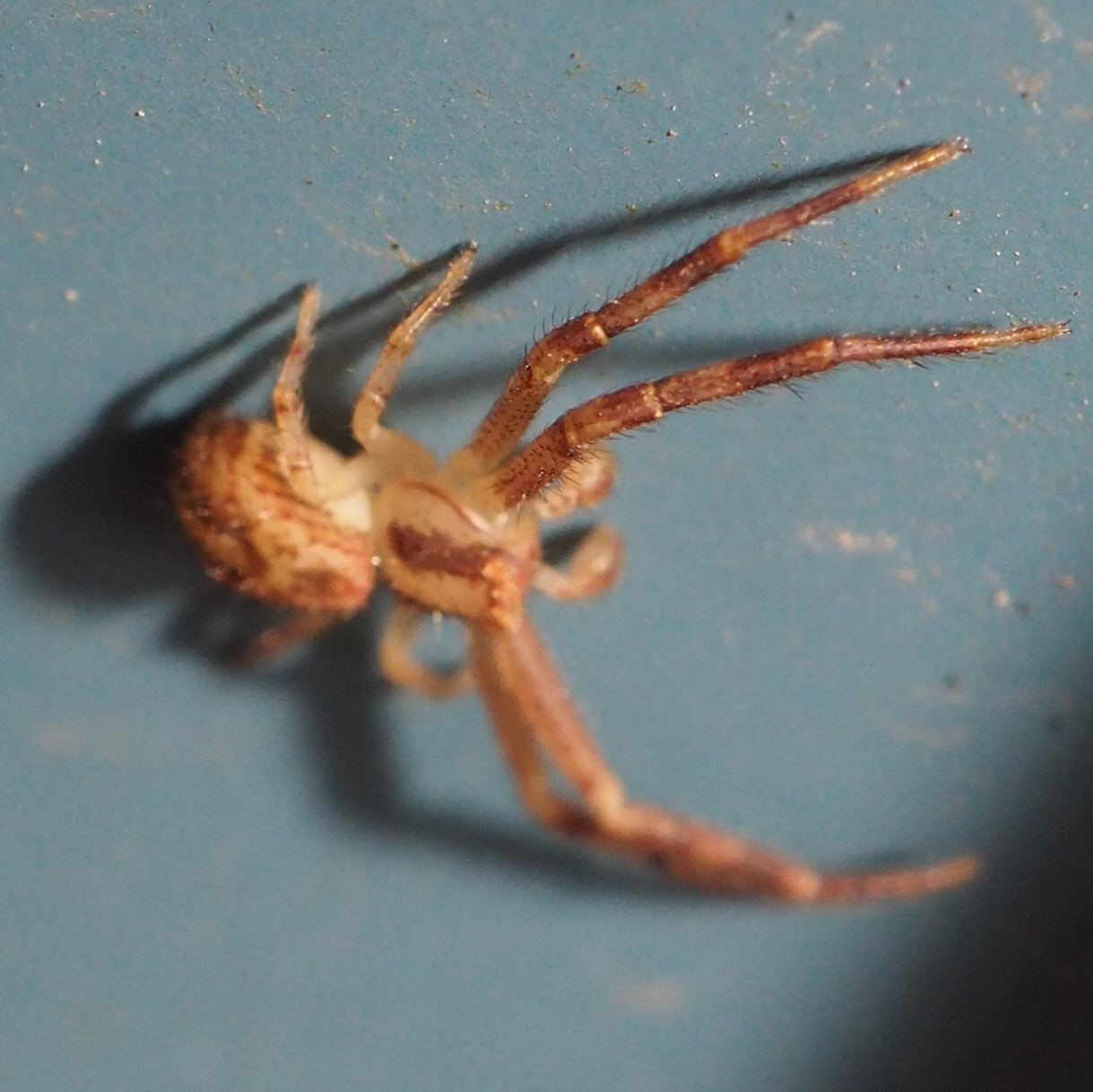
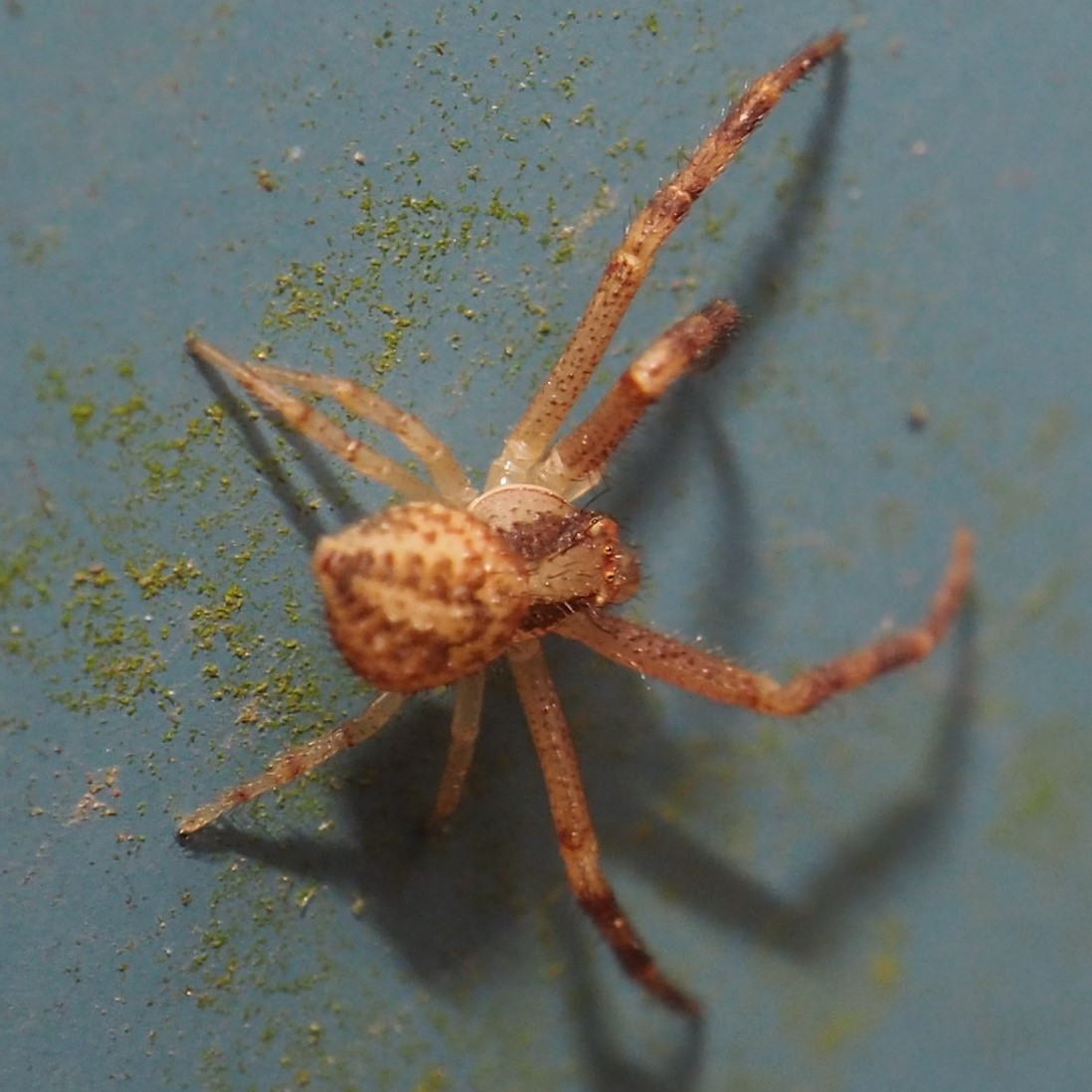
This little Spider, Euryopis funebris, makes a lot of the egg masses we spot on our walls.
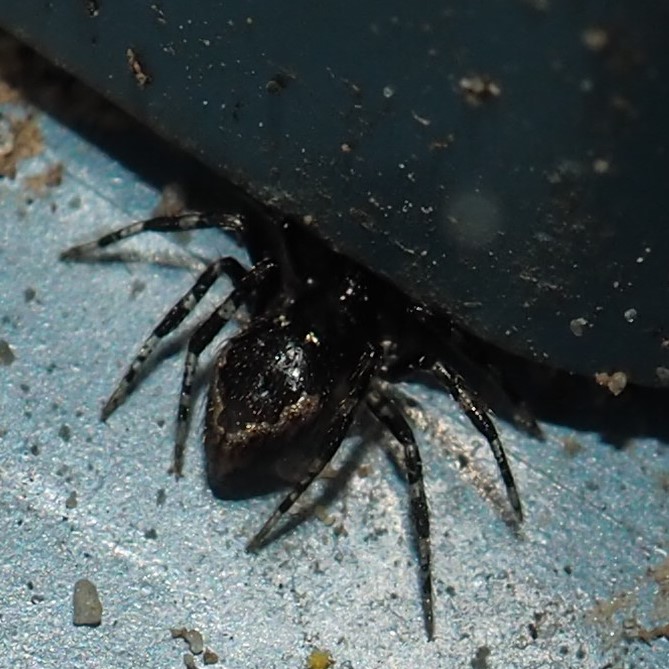
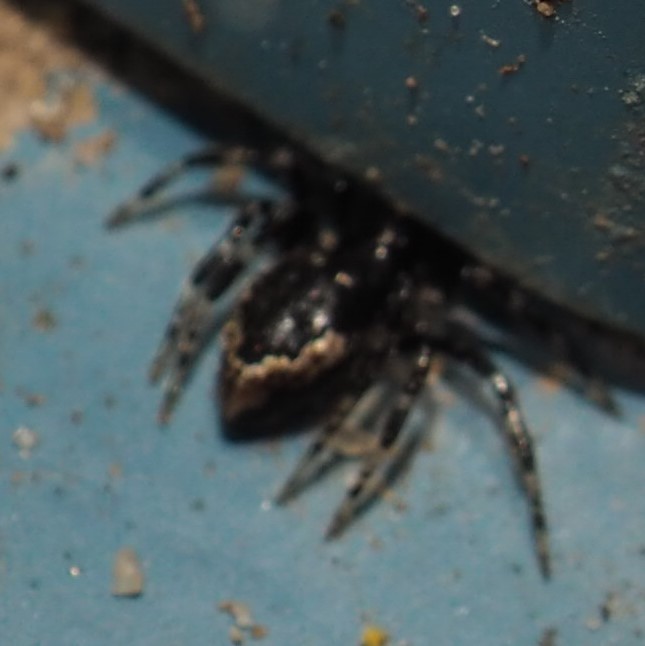
This was a good week for Jumping Spiders. The ID app convinced me that this first one was a Long-Jawed Jumping Spider of some kind. But my favorite of the Jumpers is this little one, that is just starting to show itself. These juveniles have various markings as they get older. Look at the innocent face on this second one. Don't you just want to say "here kitty kitty kitty"? The one thing that people like about the Jumpers is that they are capable of looking straight forward, showing their relatively huge eyes in such an appealing way. Third here is a Wolf Spider, I believe.
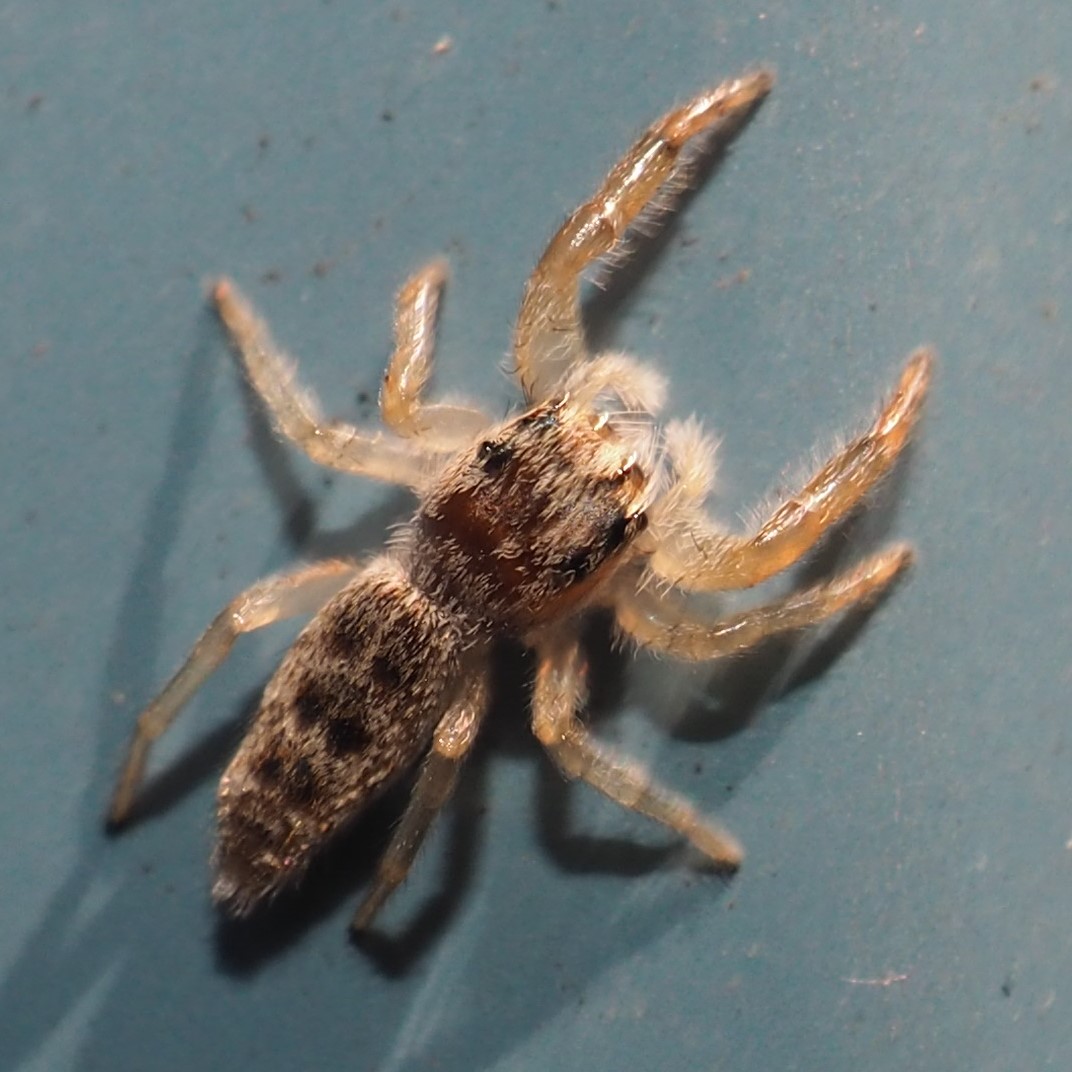
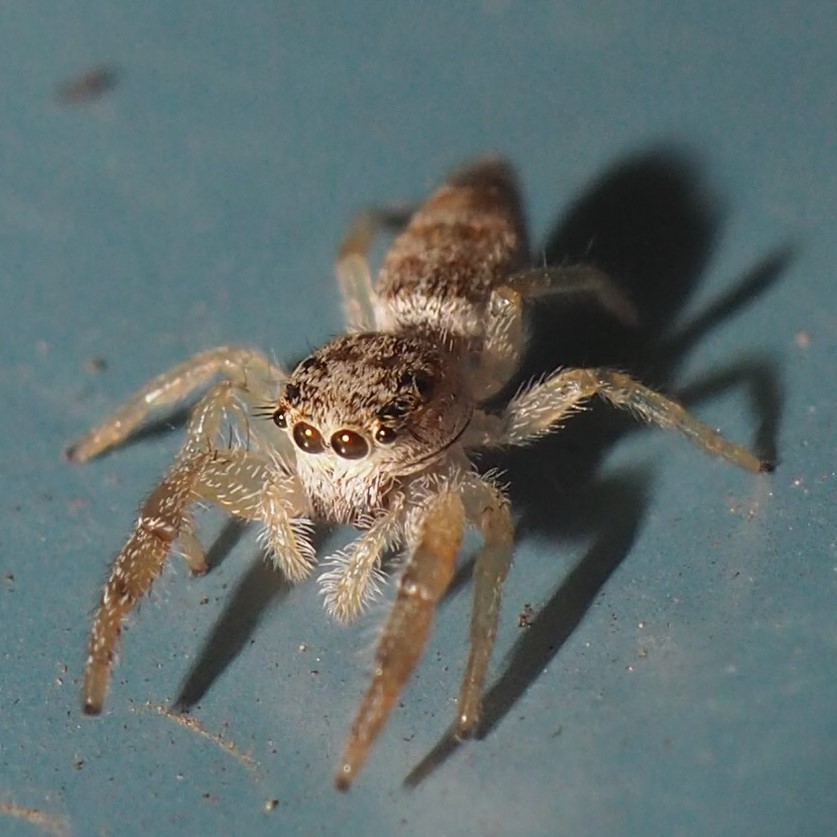
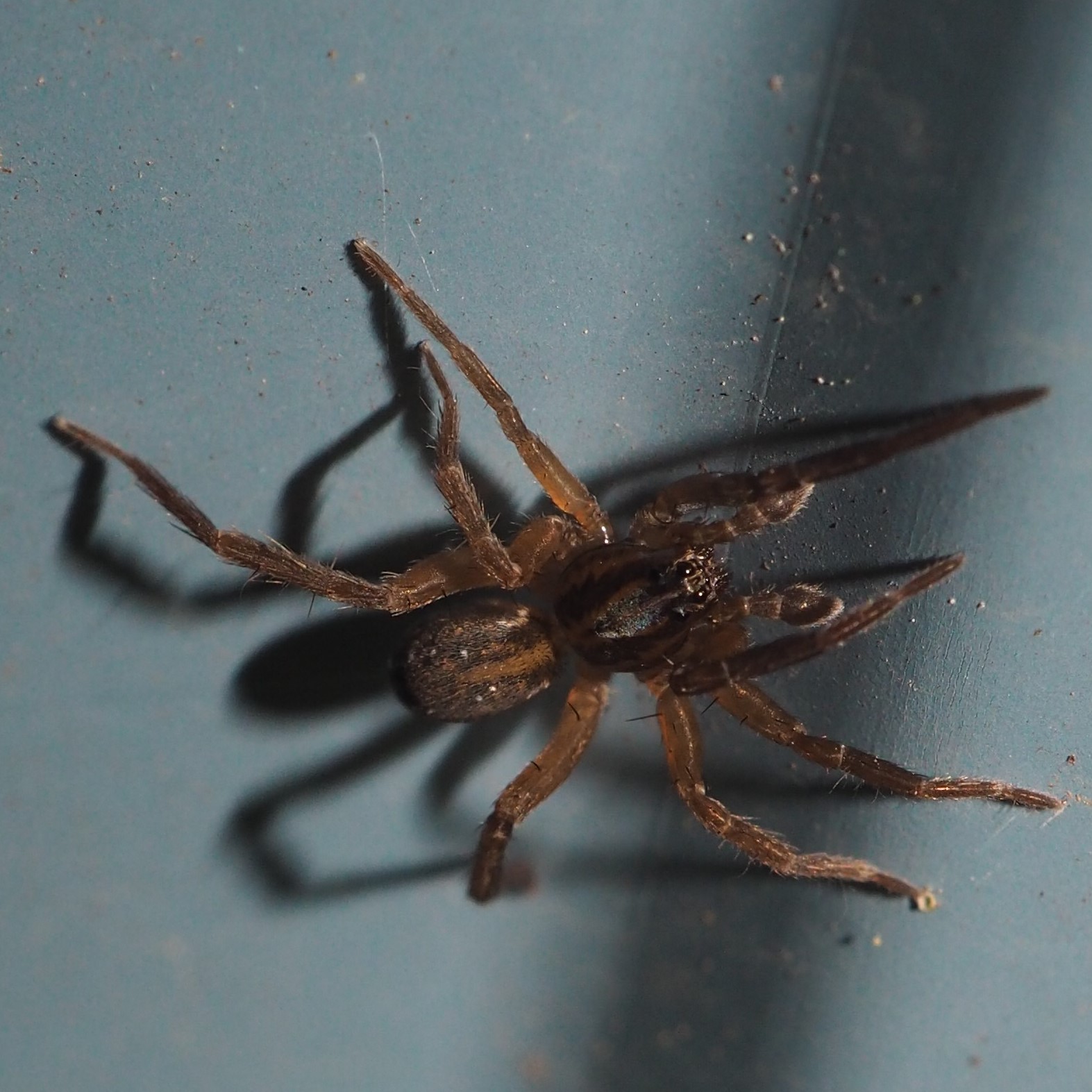
Well, that brings us down to such things as Wasps, Pillbugs, and the nonce. This first fellow came in as a Narrow-waisted Wasp, or Ant, or Bee. The next little Pillbug was wandering by the Pond. And the last on on the Wall.
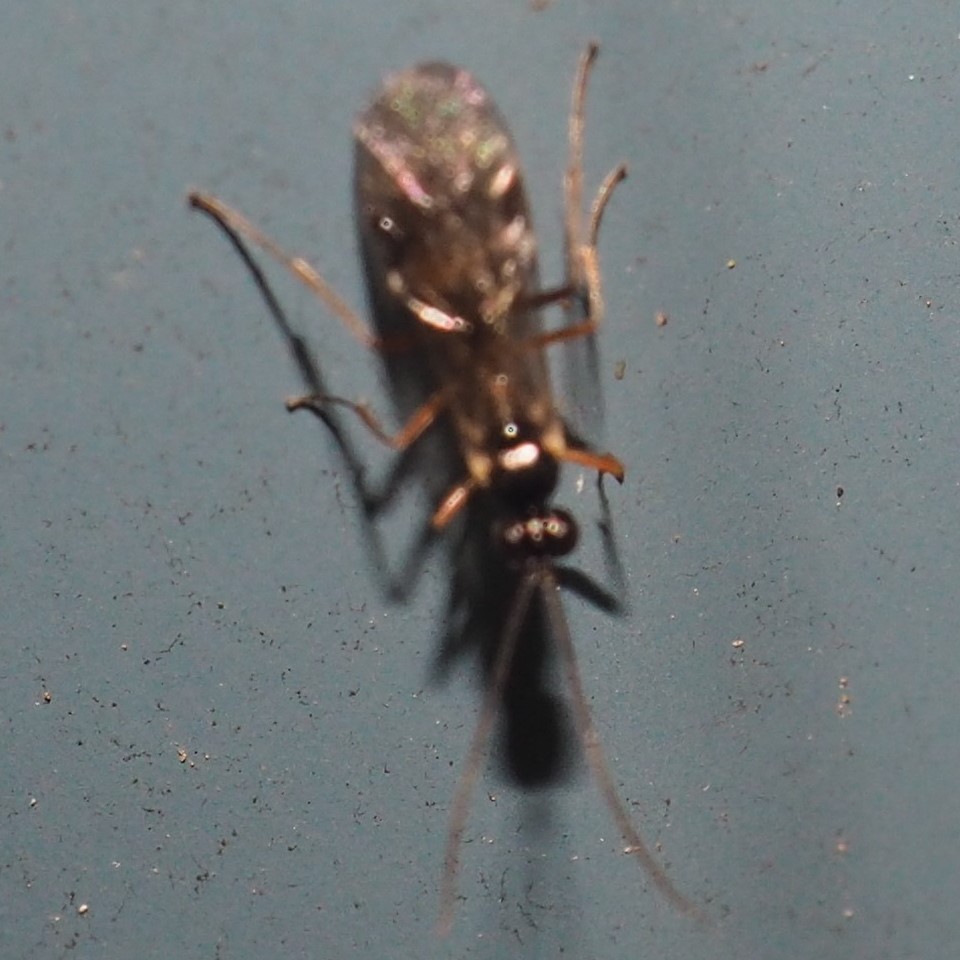
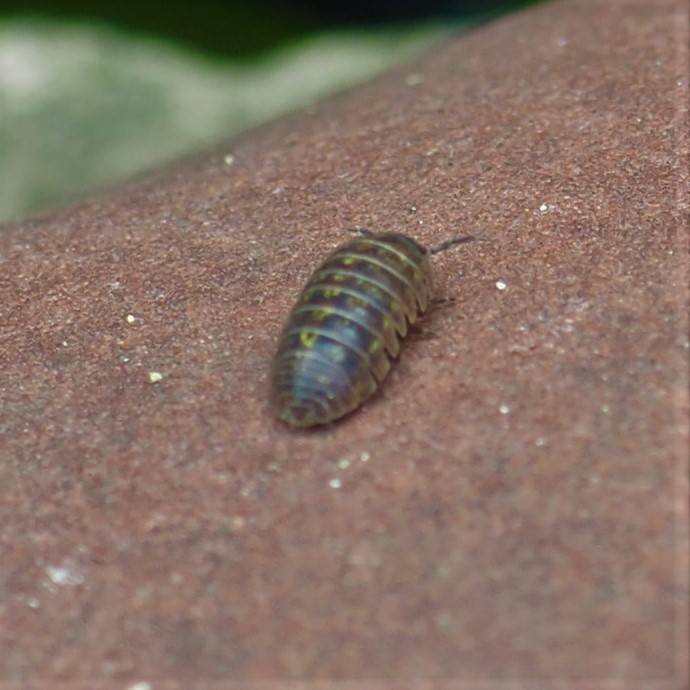
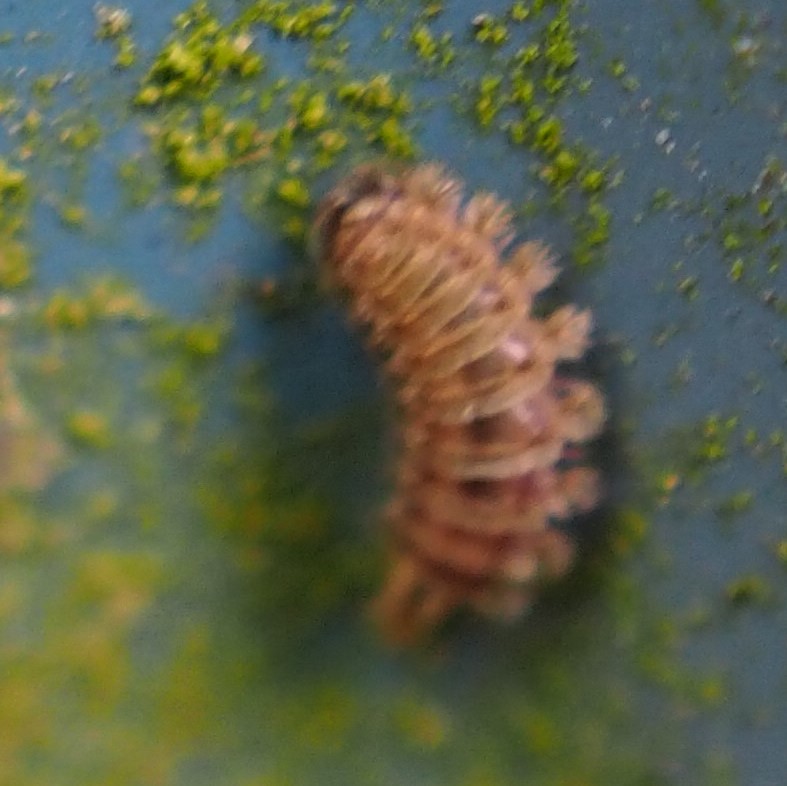
I hope you know that "that thing about Love being all you really need" is what this issue has really been all about. What a multiplicity of kinds of Love is shown every day, especially in the Spring, in our Natural World! Think of that great song from Horse Feathers.
here
Love, Martha
Back to May 8, 2022
Forward to May 22, 2022
Back to main menu
copyright Martha O'Kennon 2022


































 <
<

 <
<

























